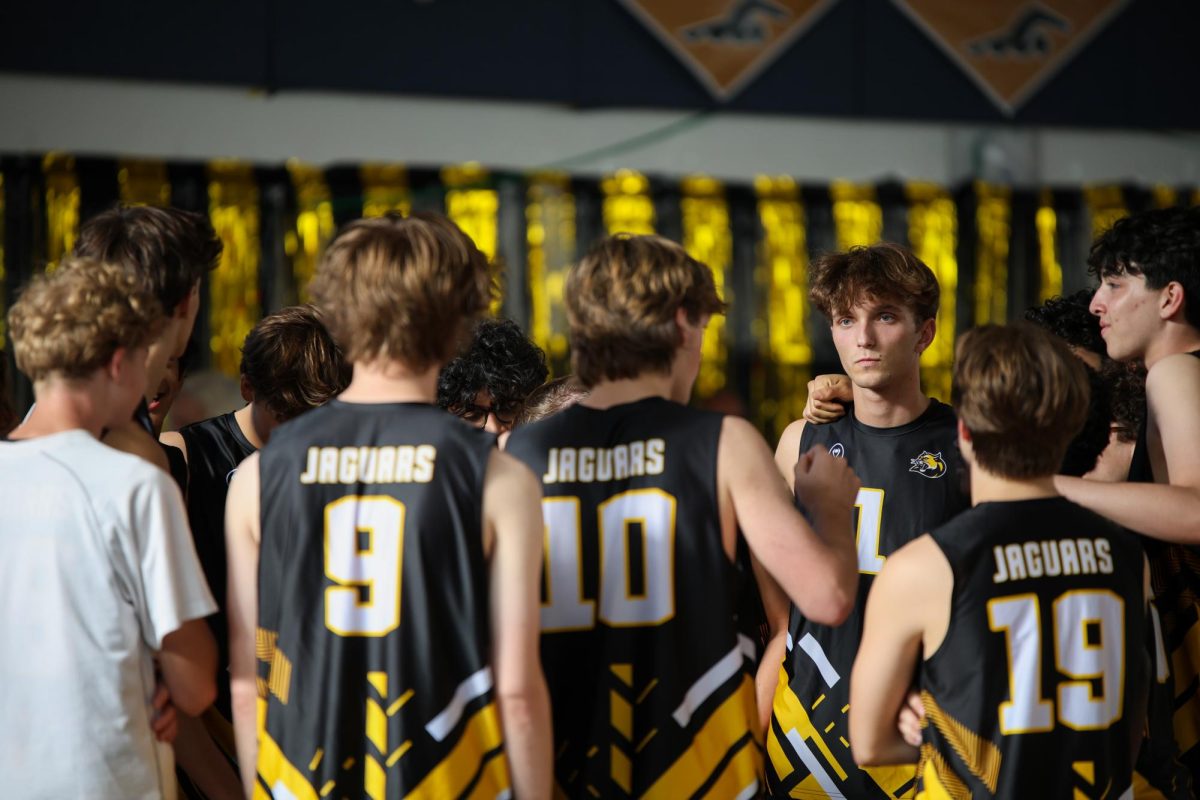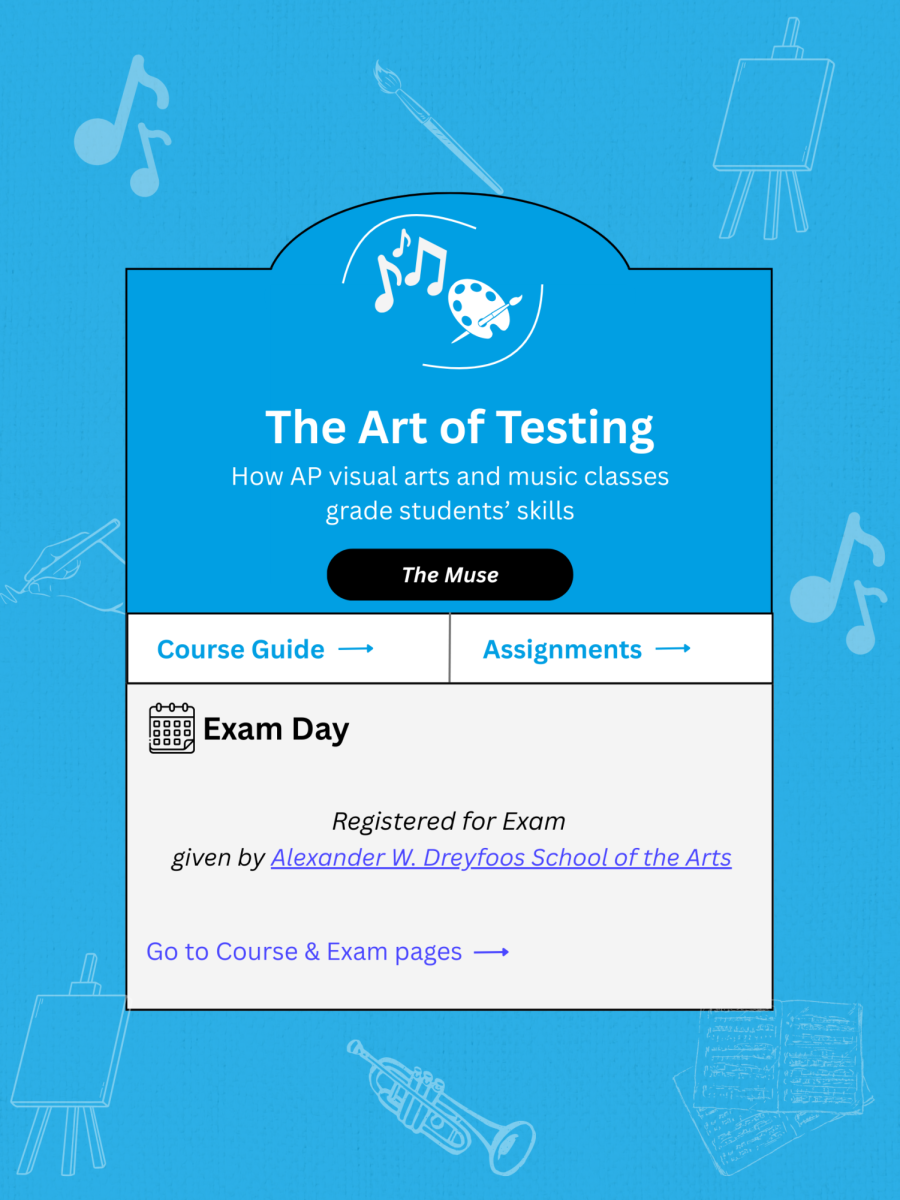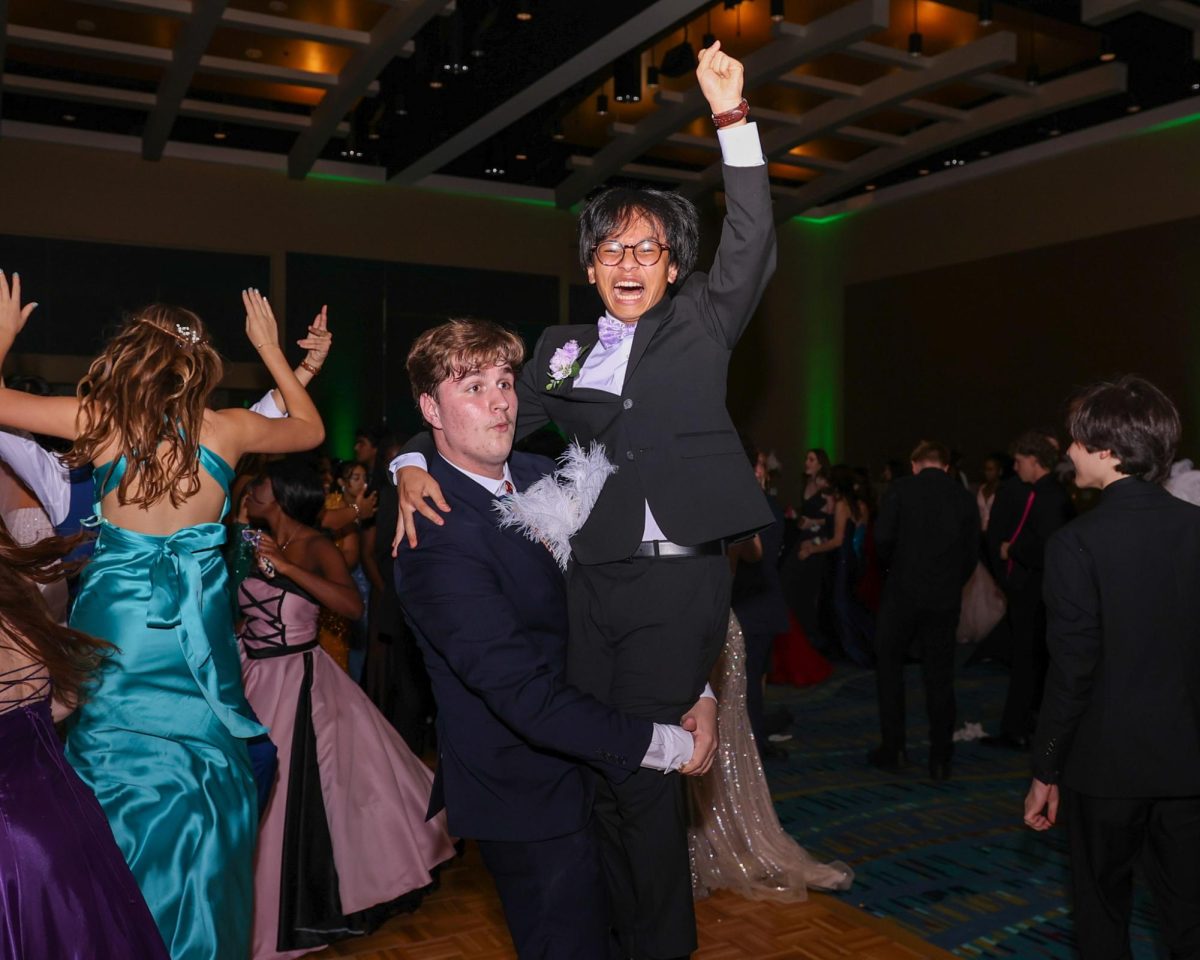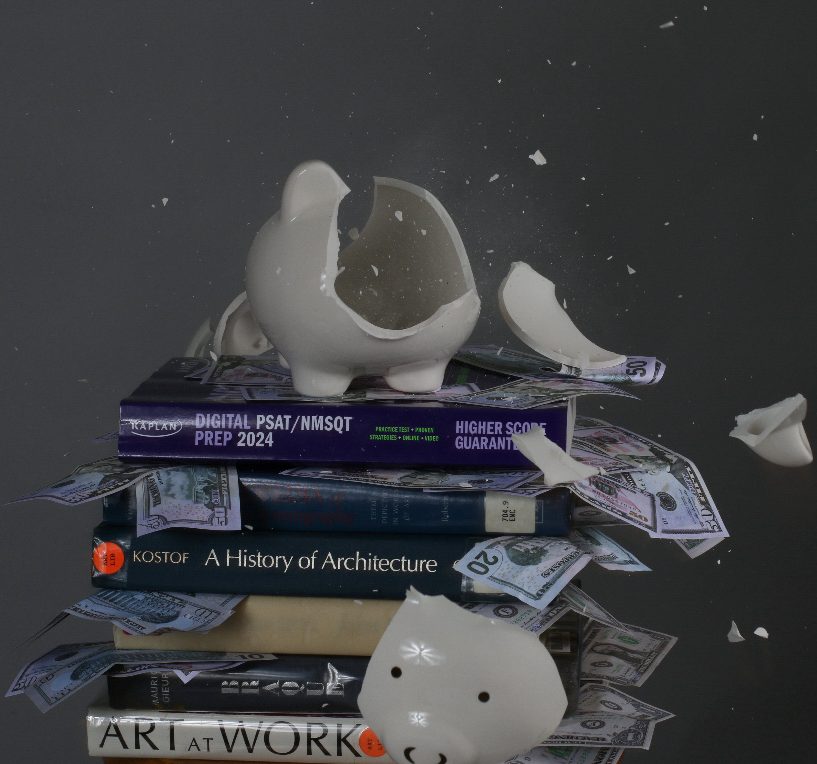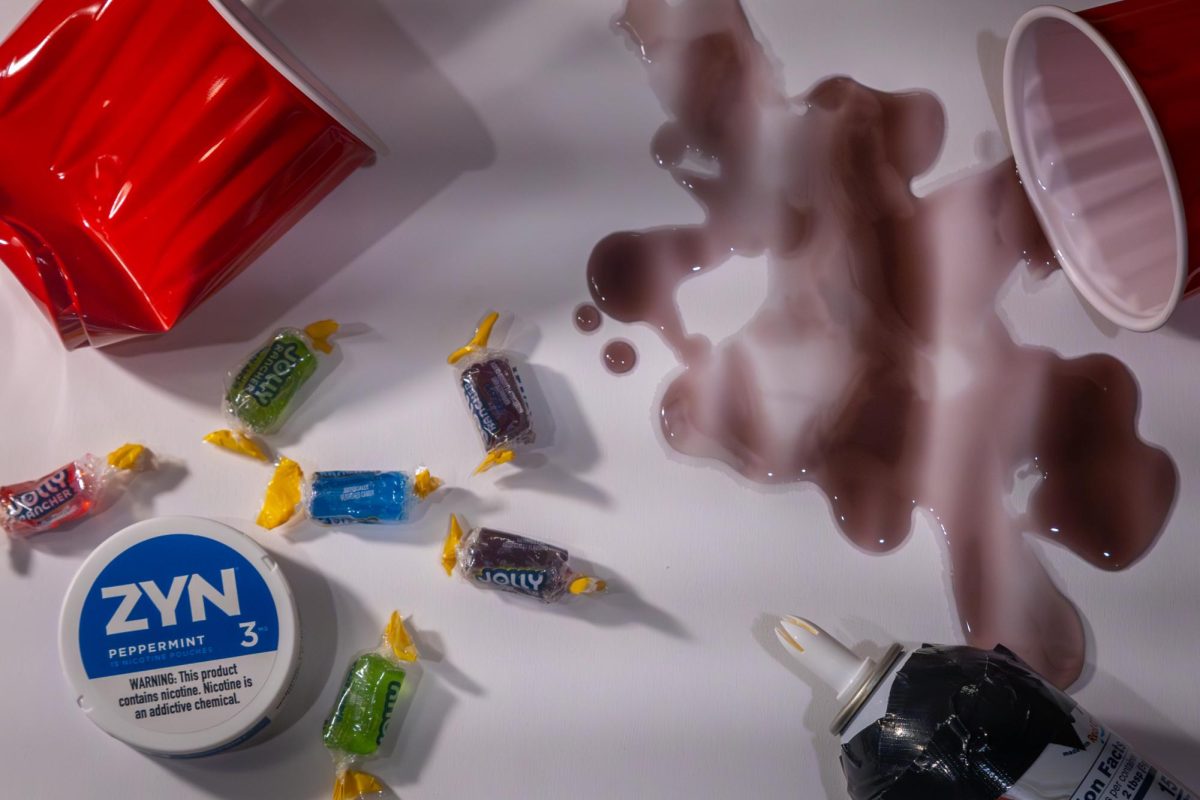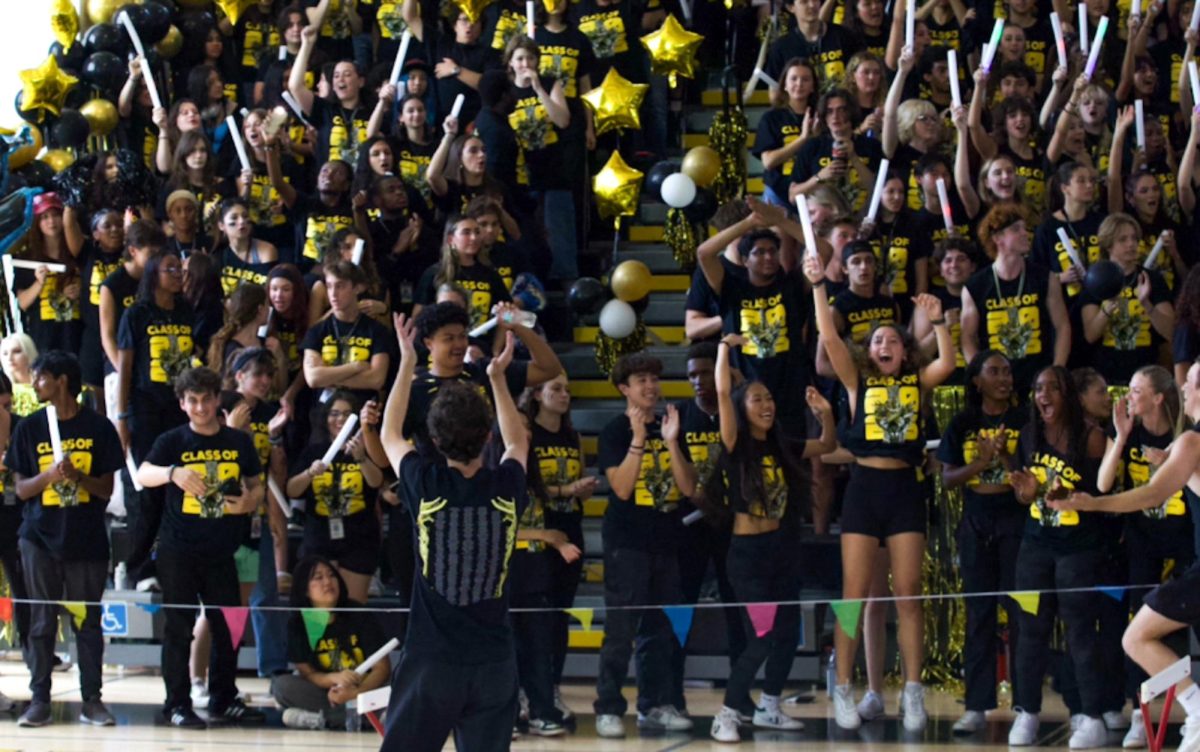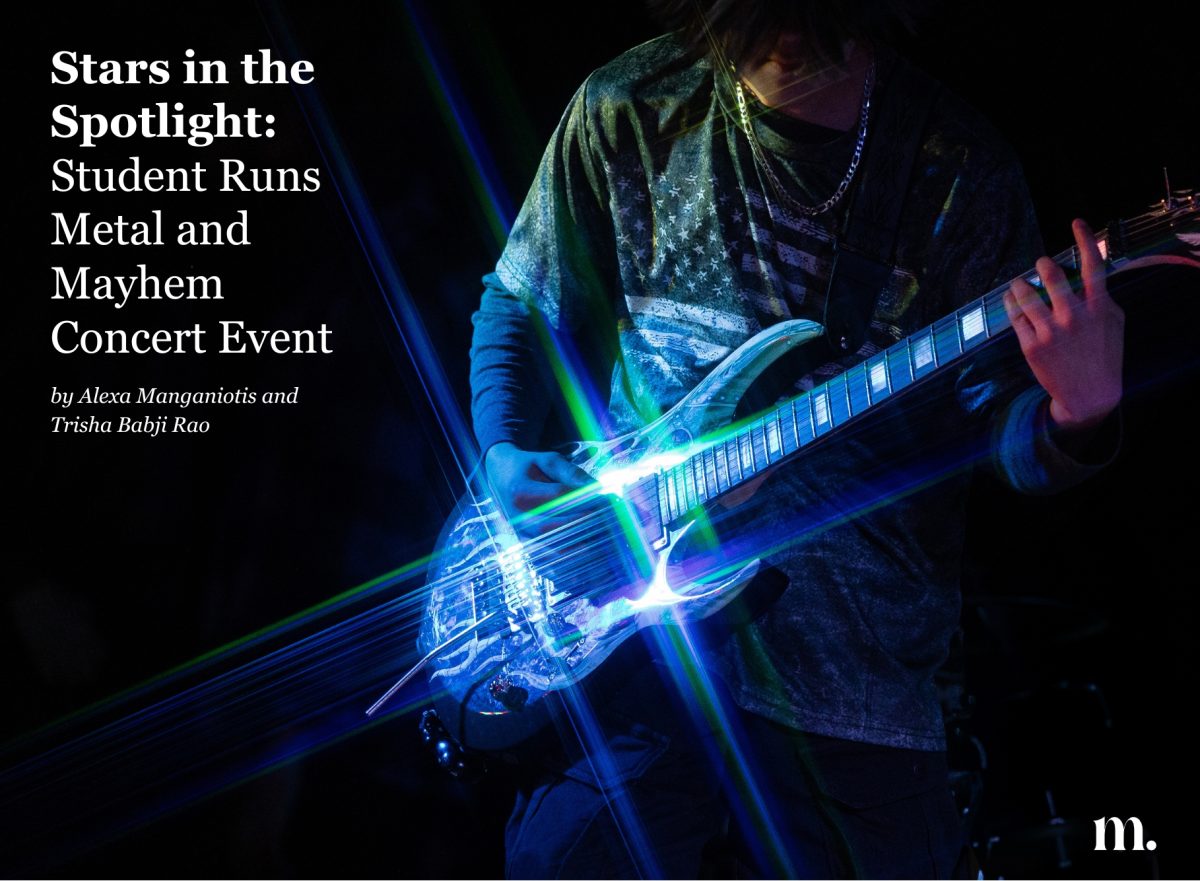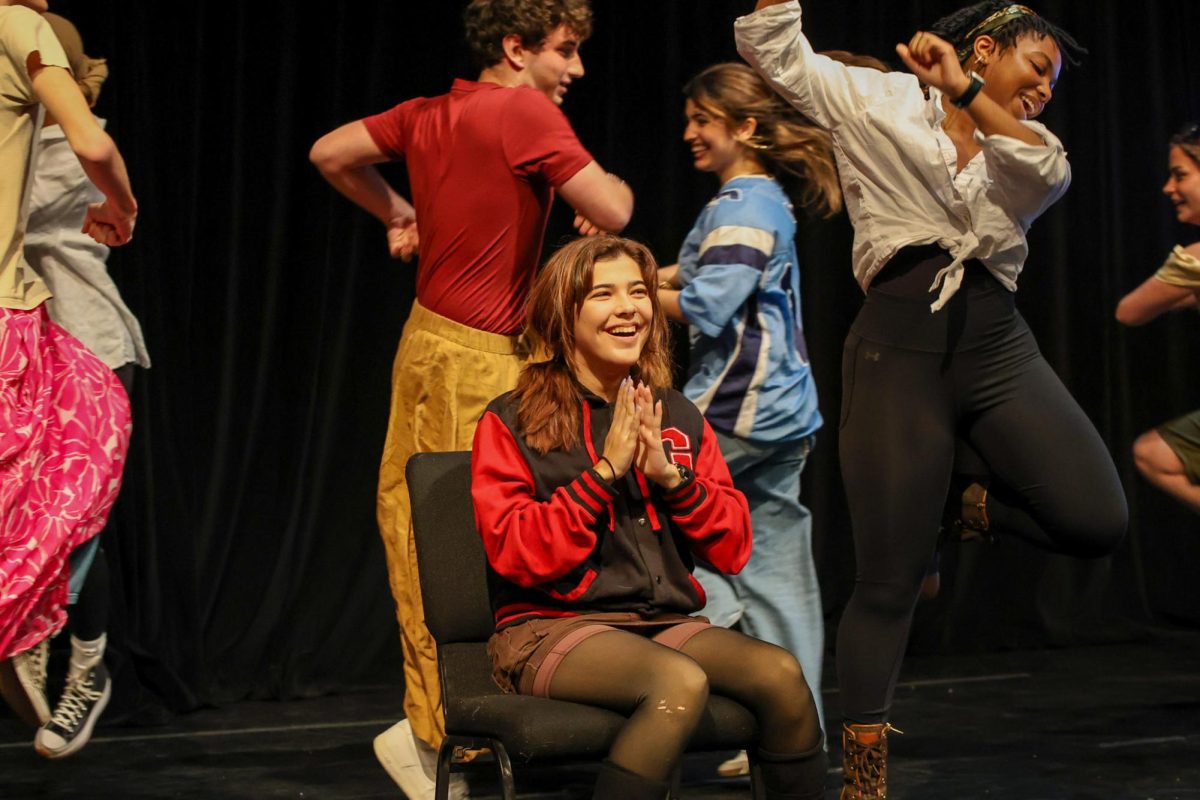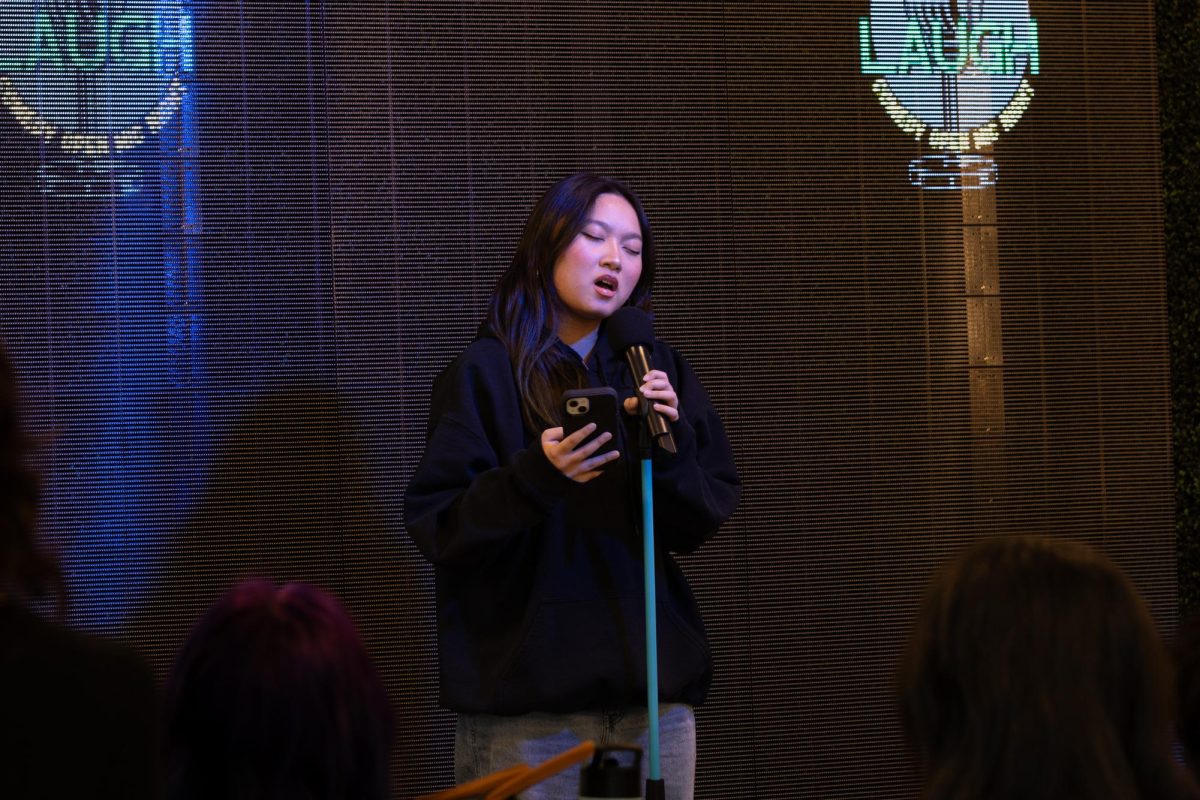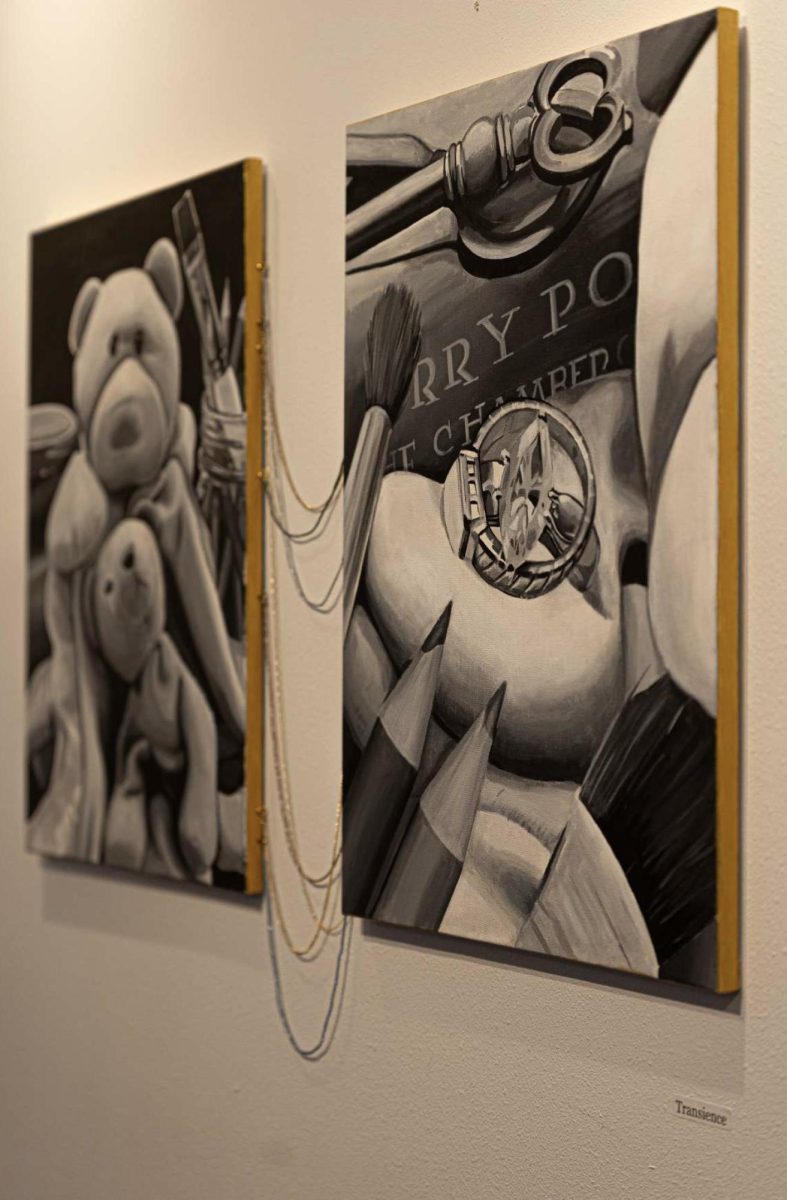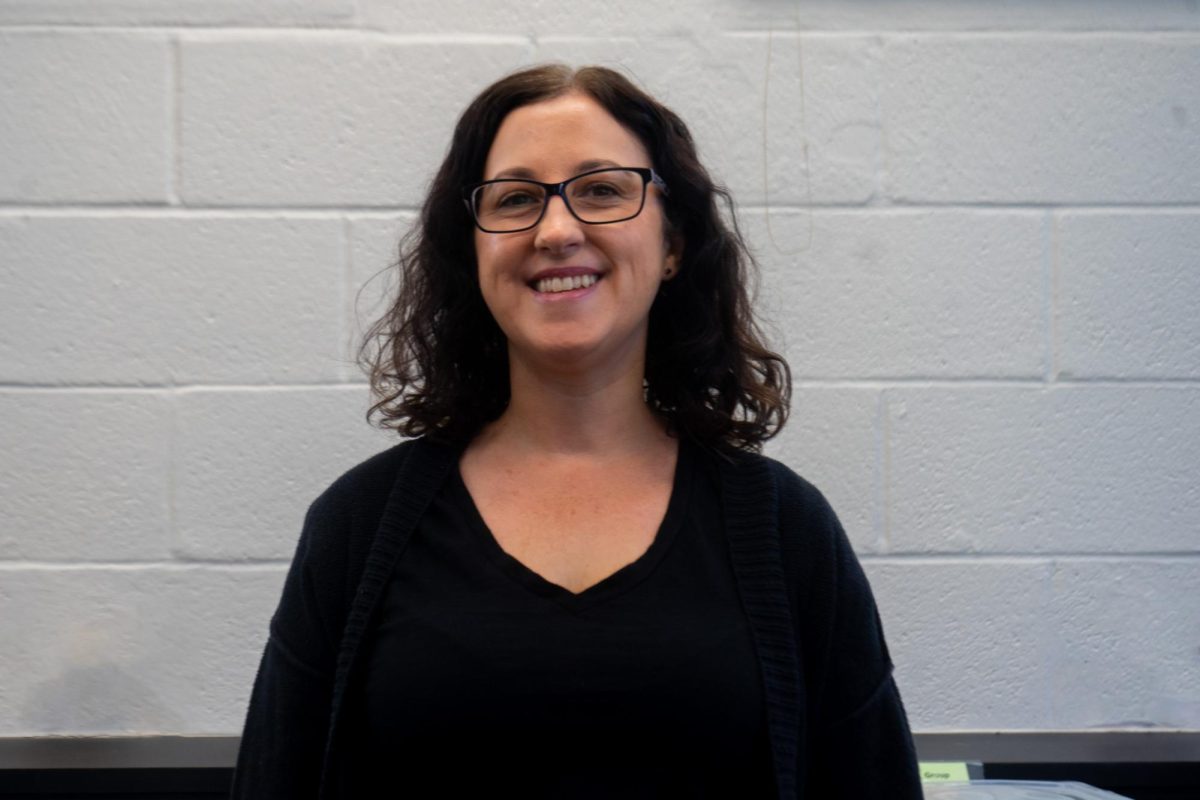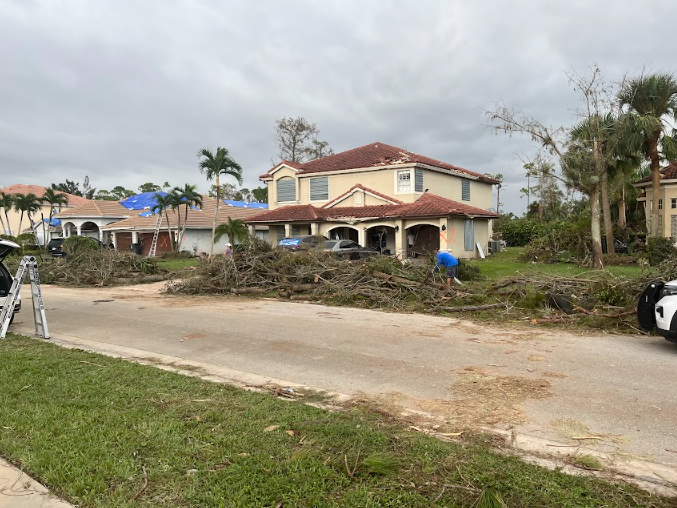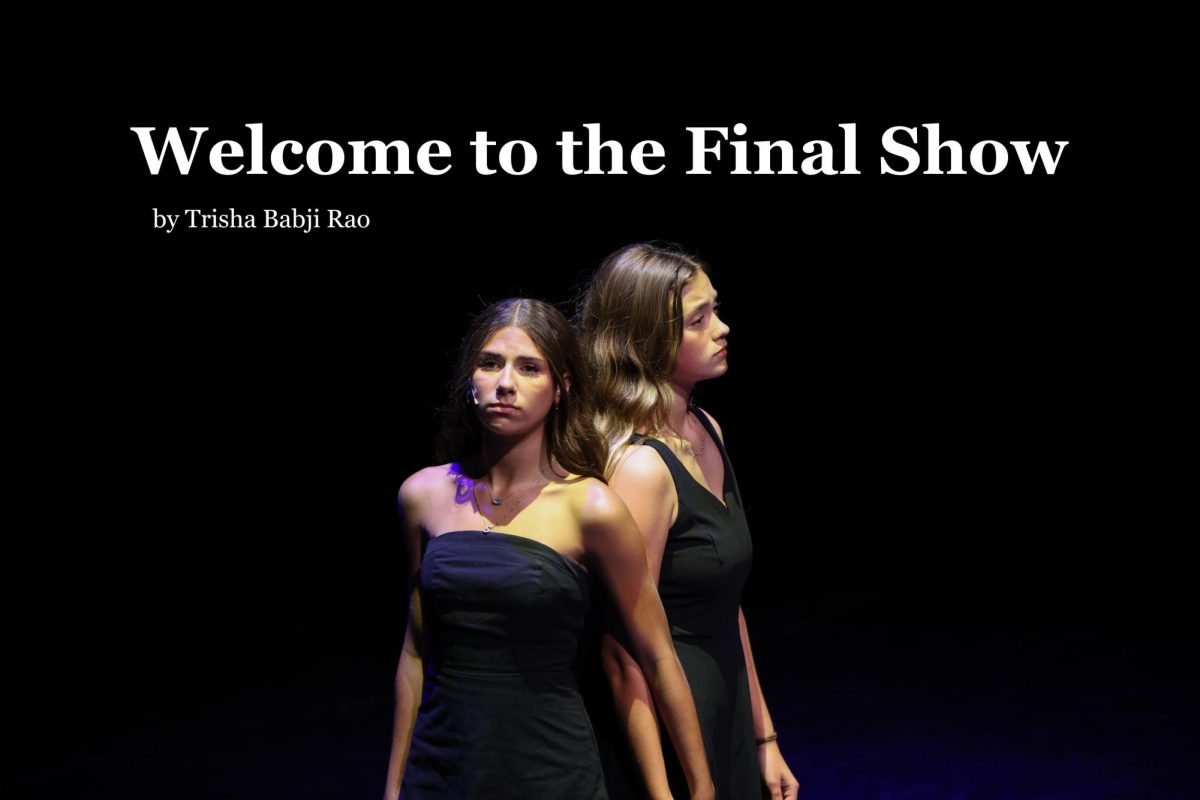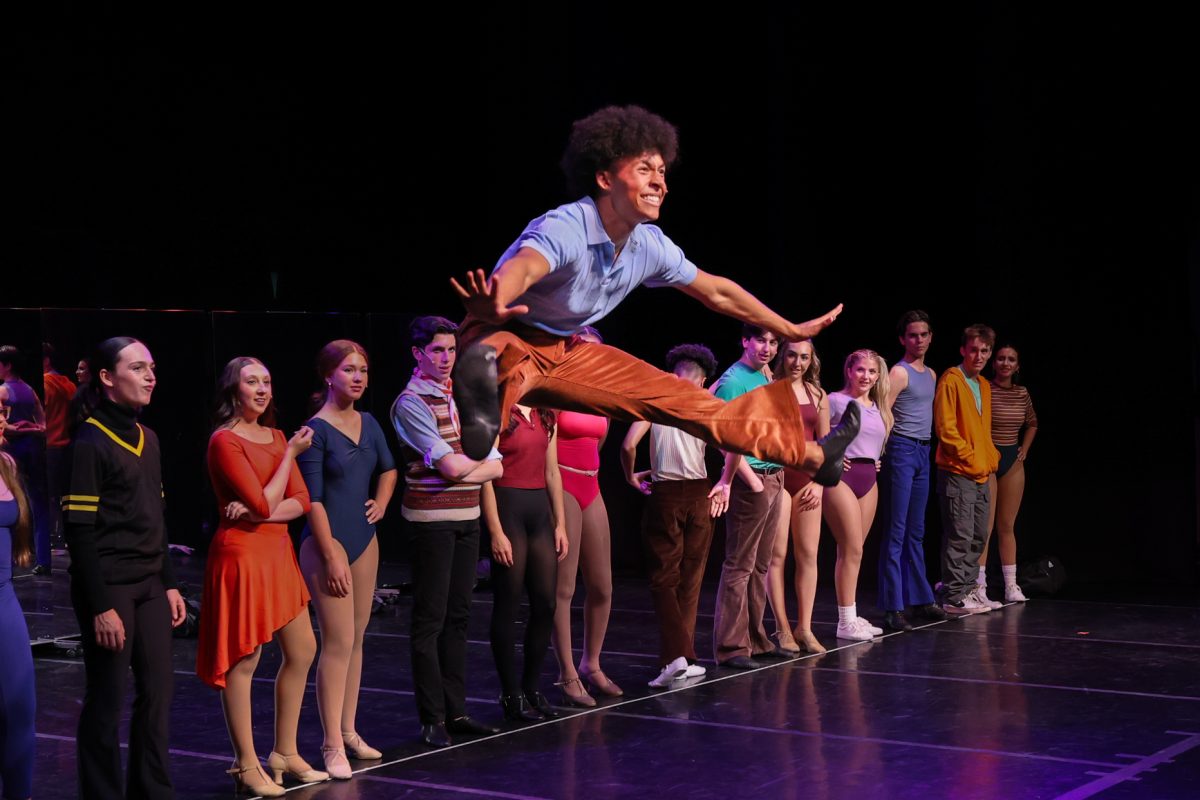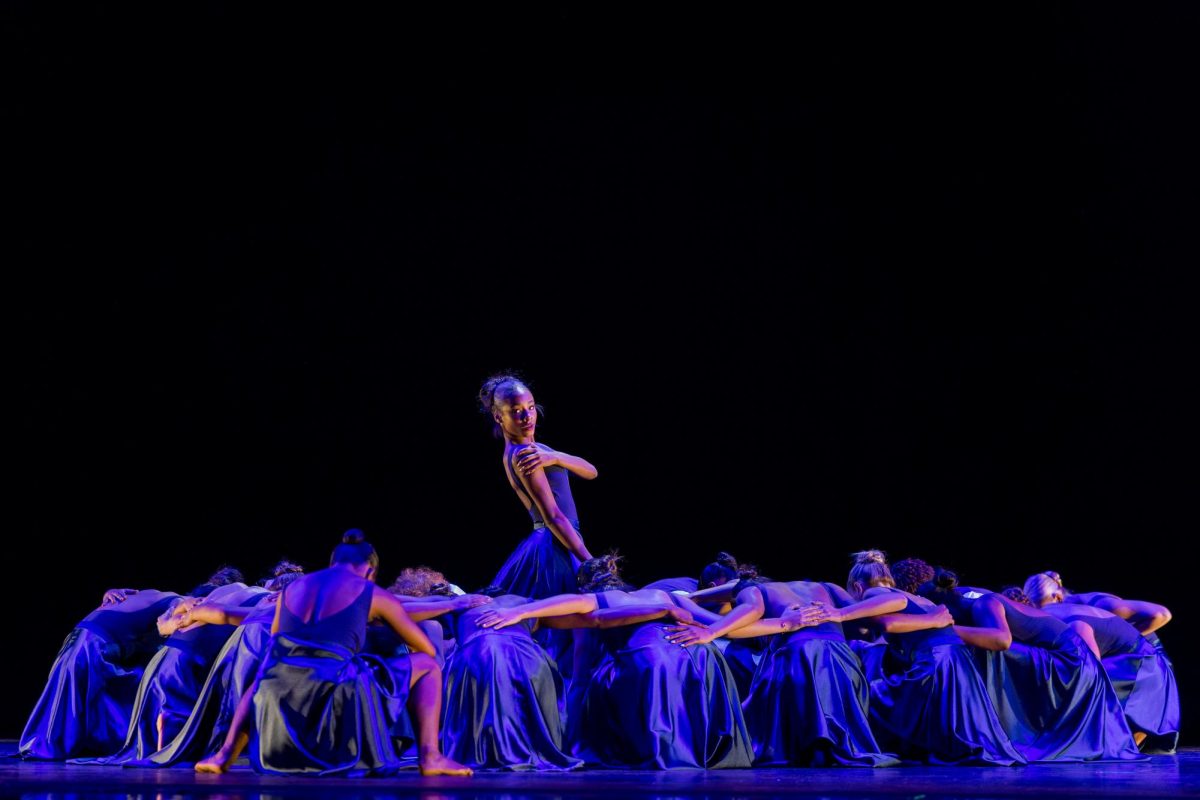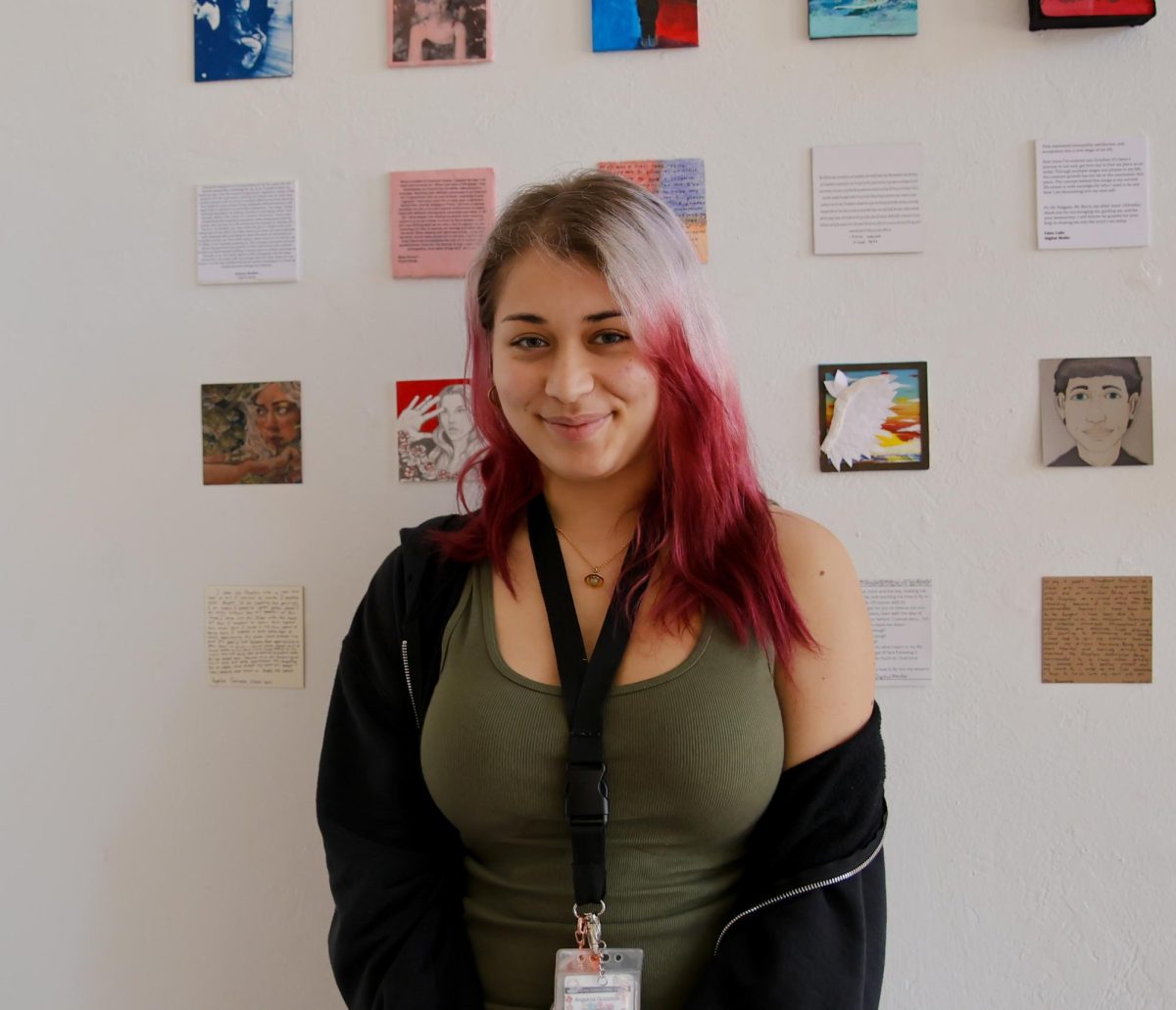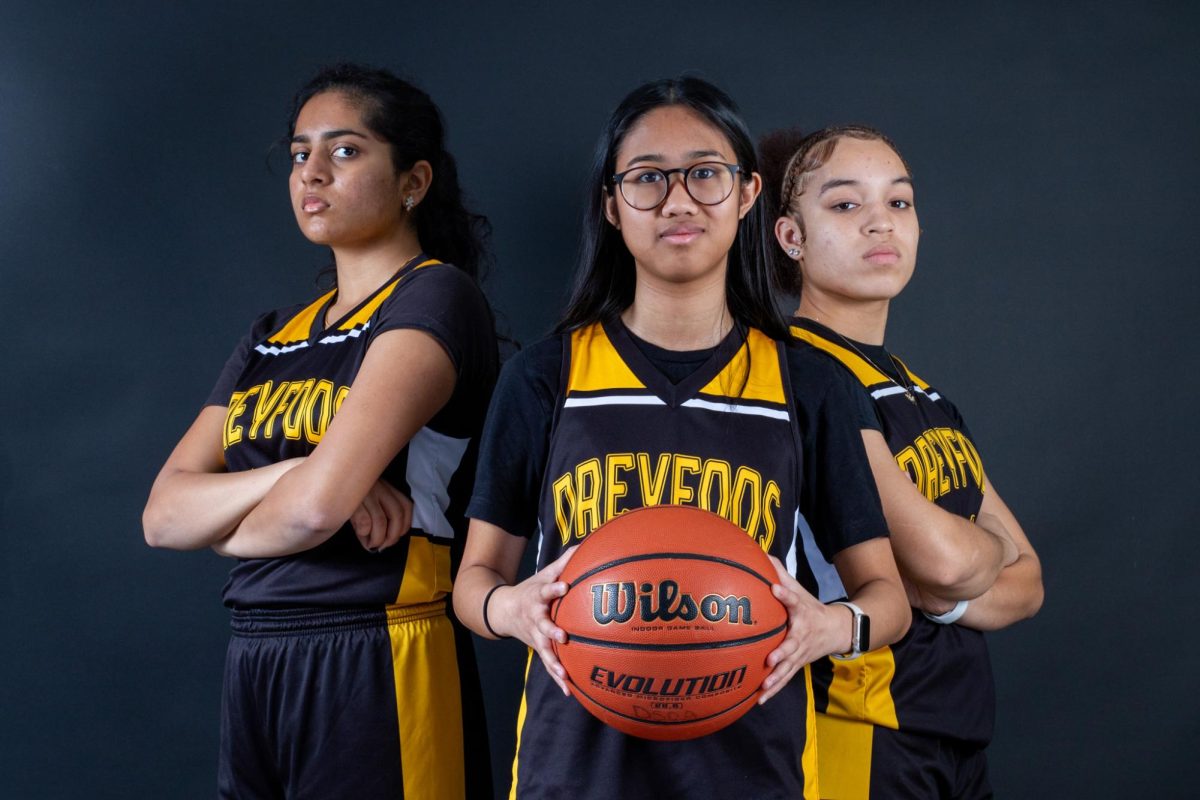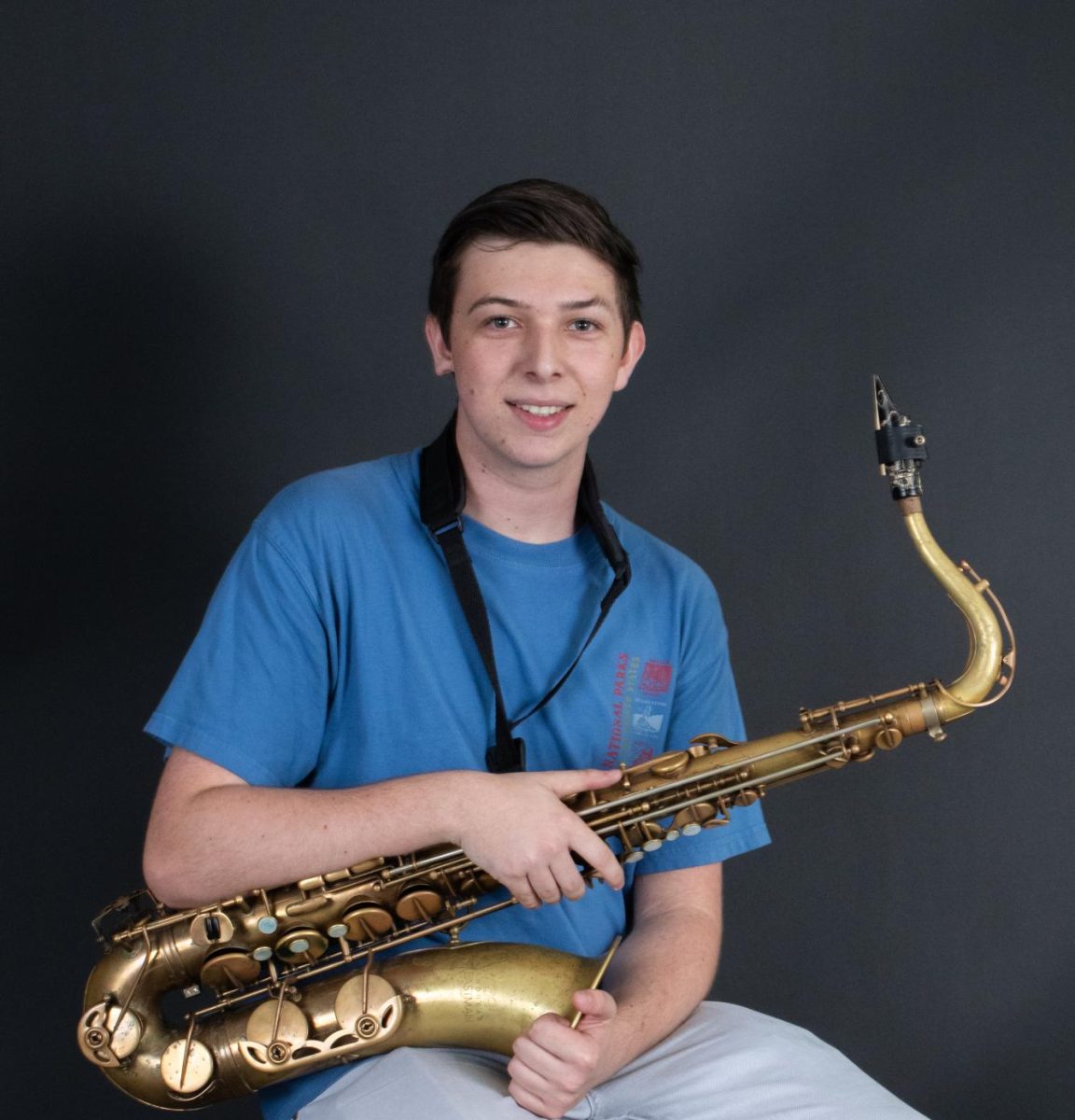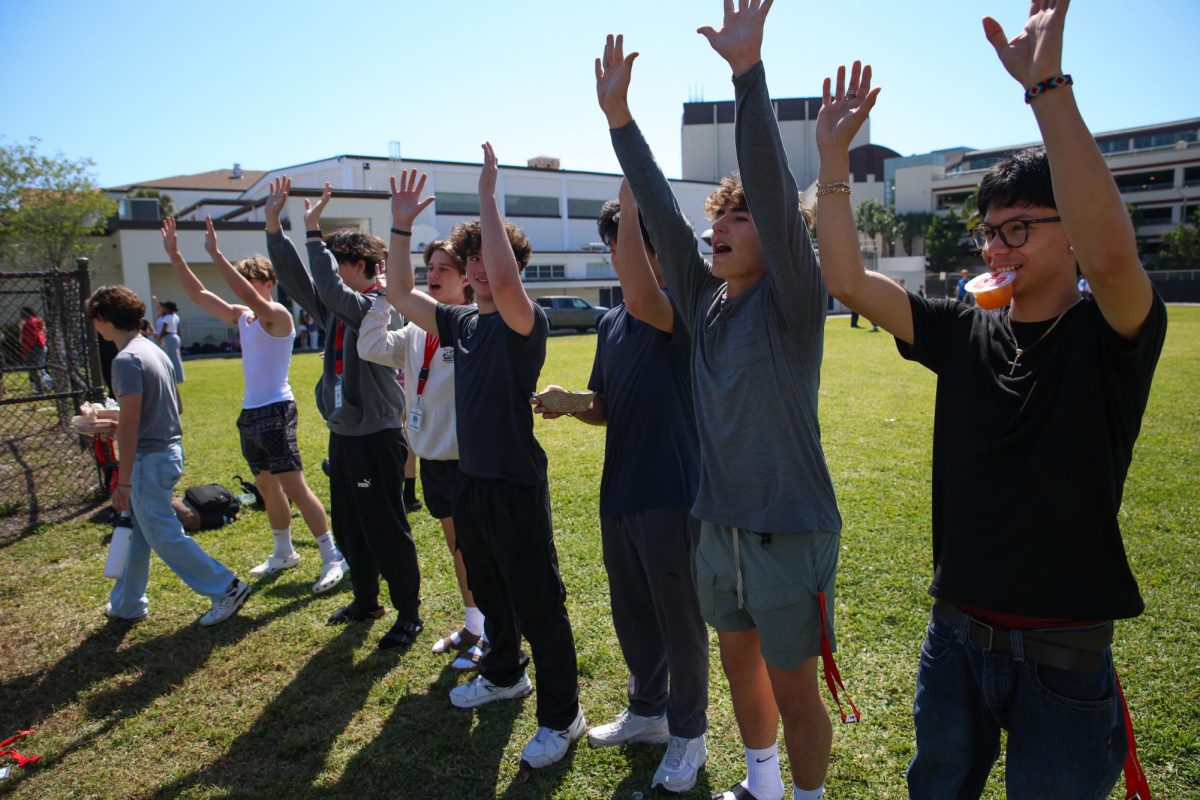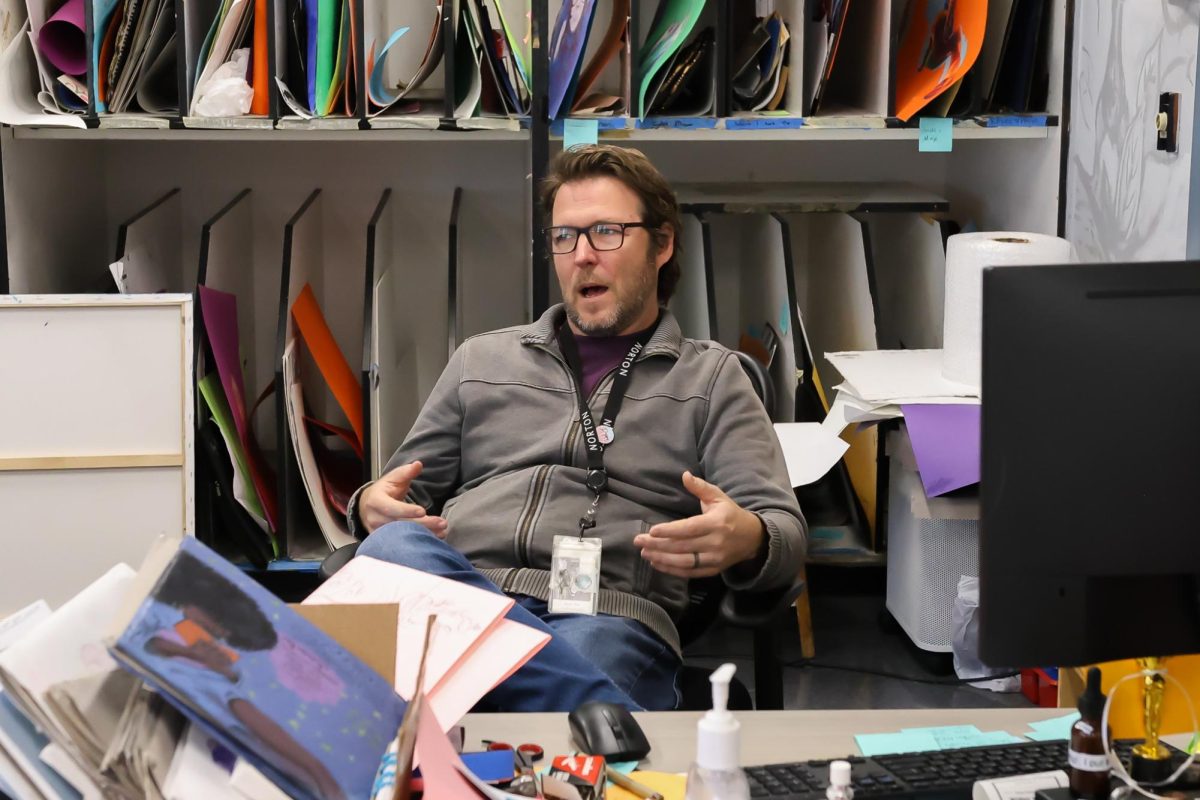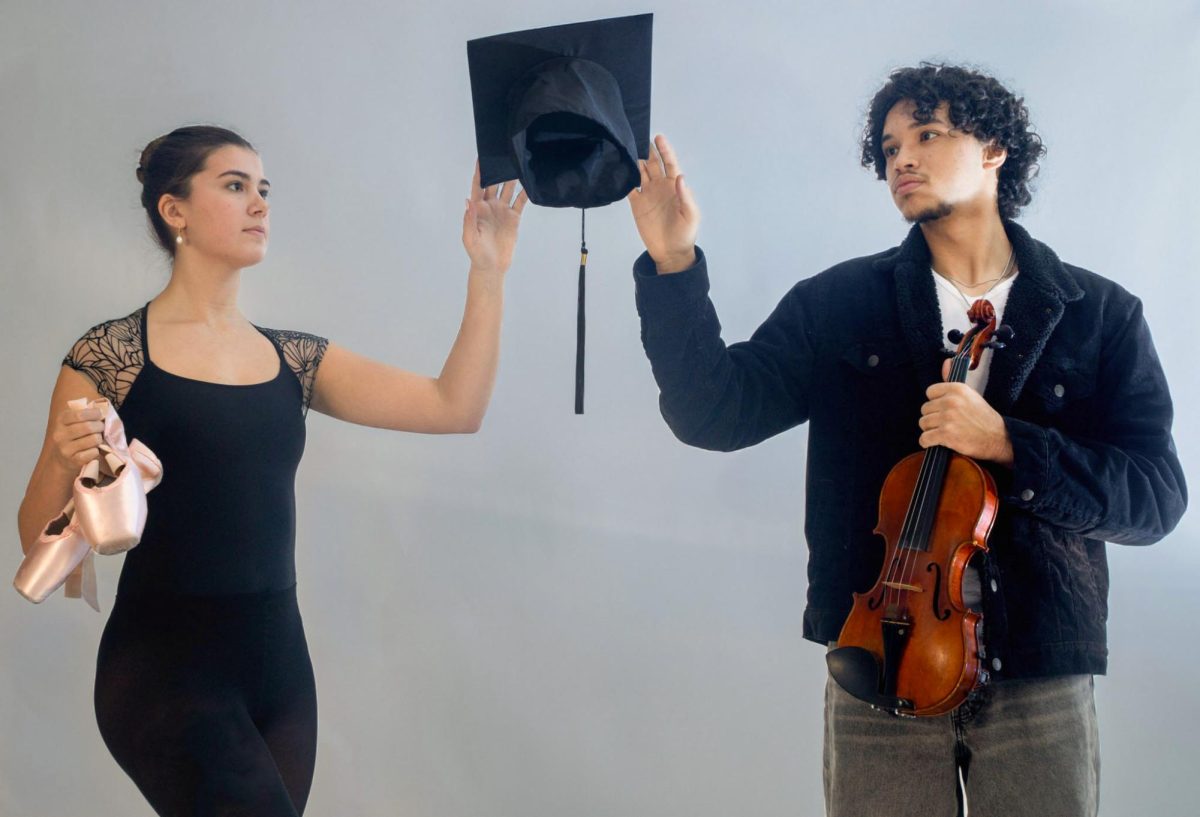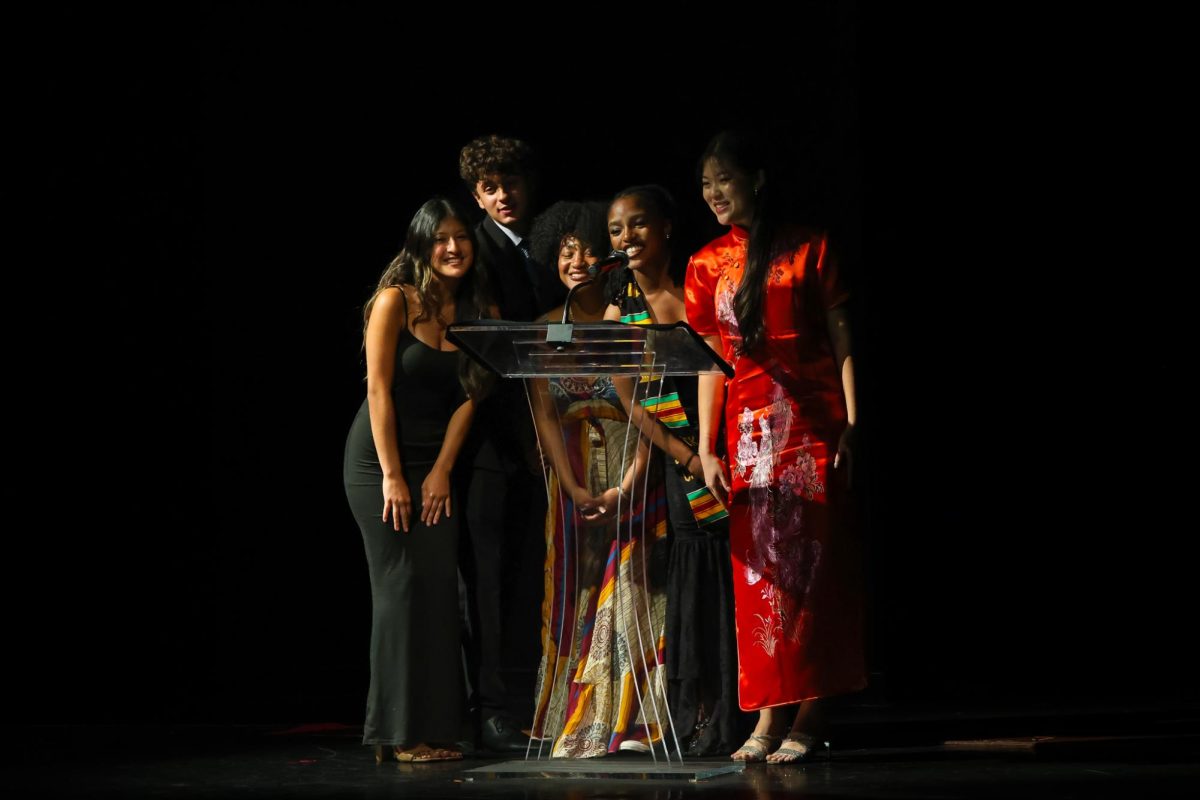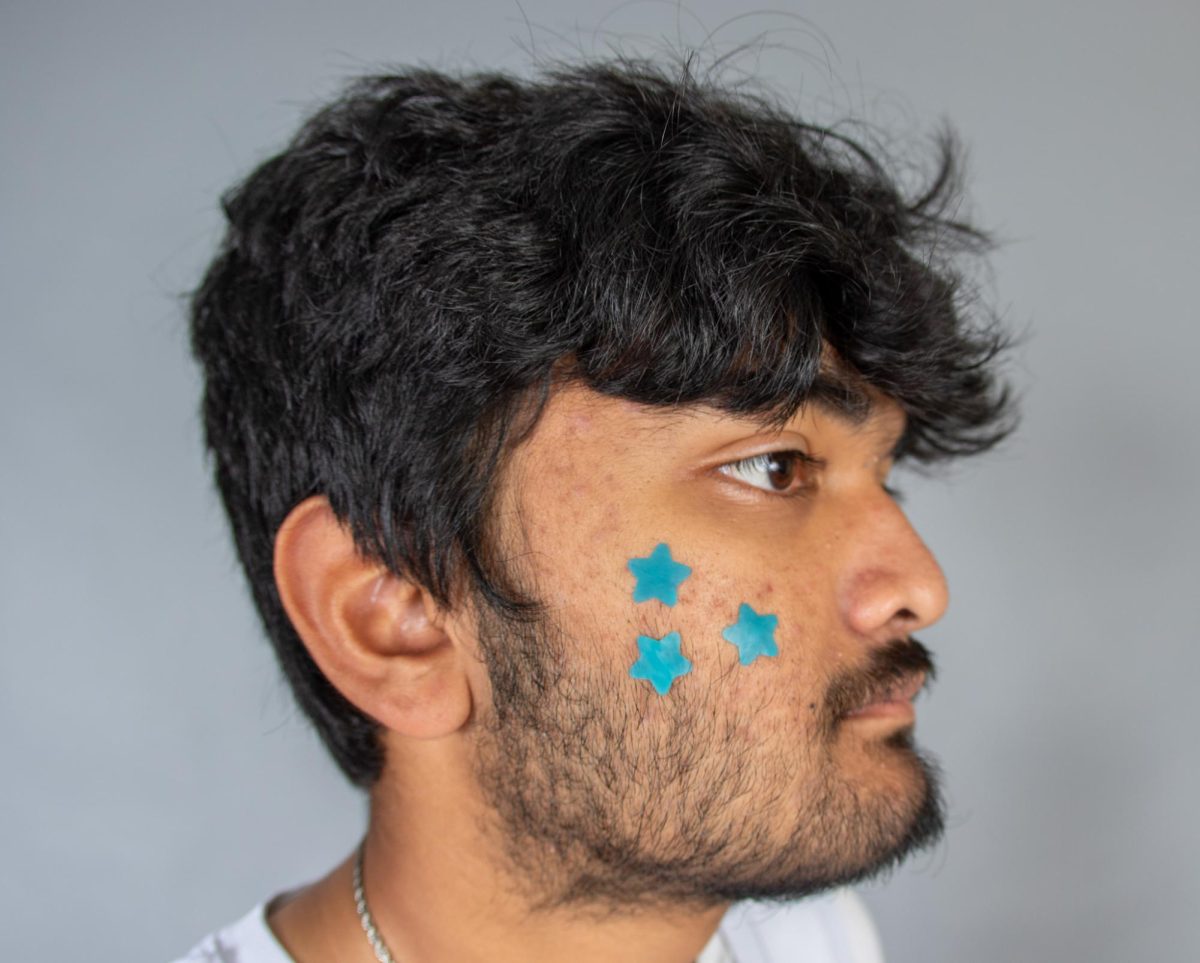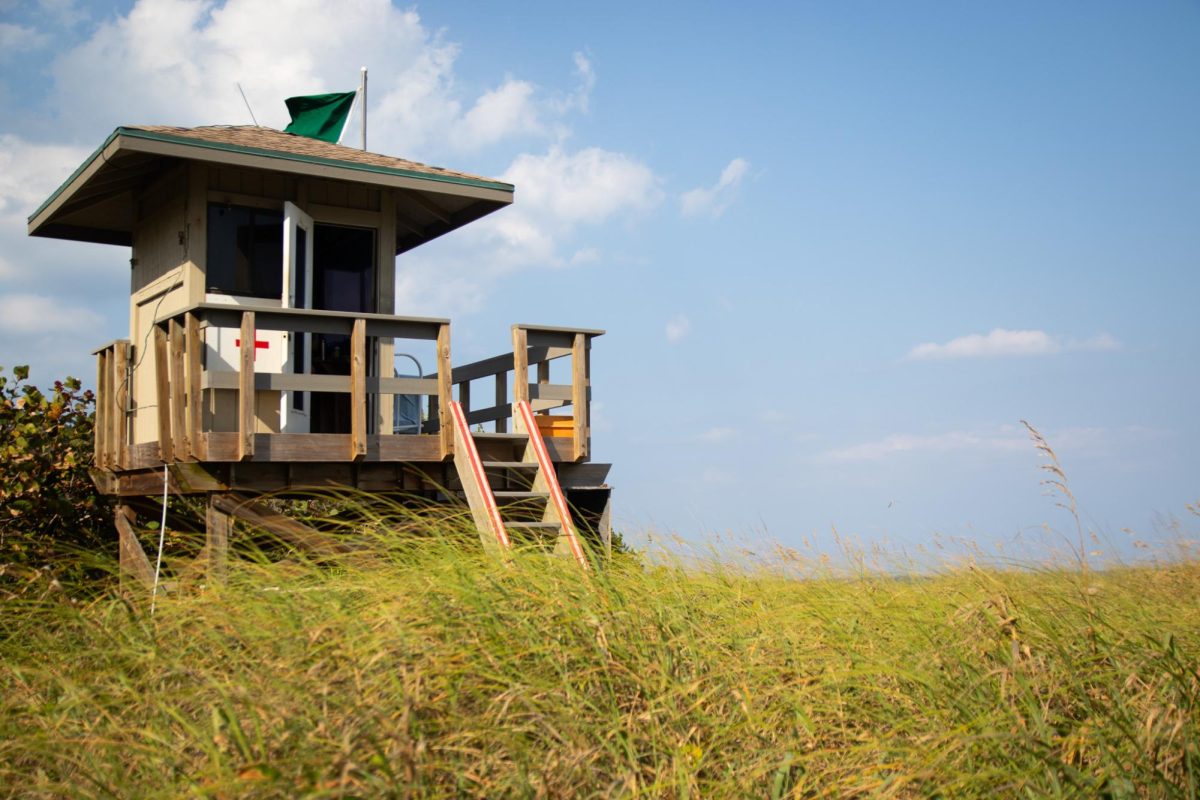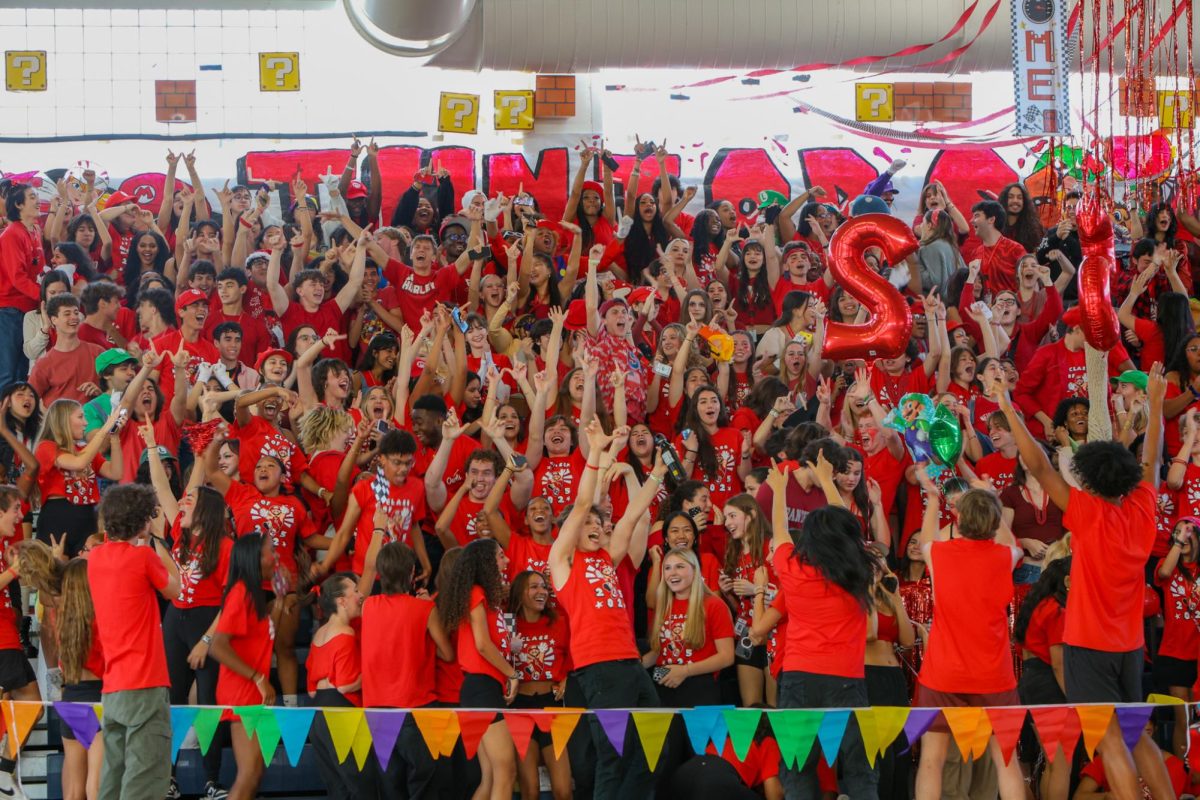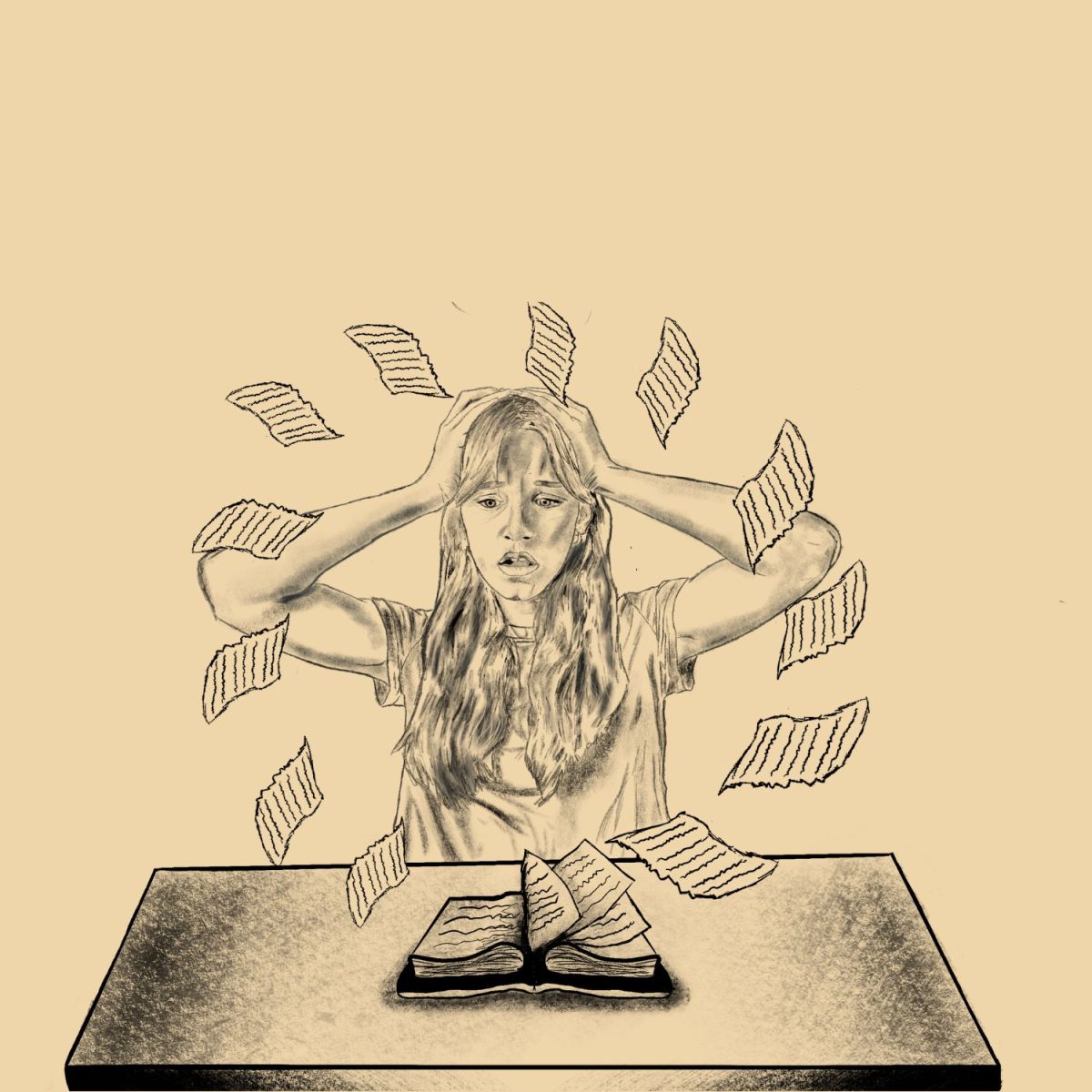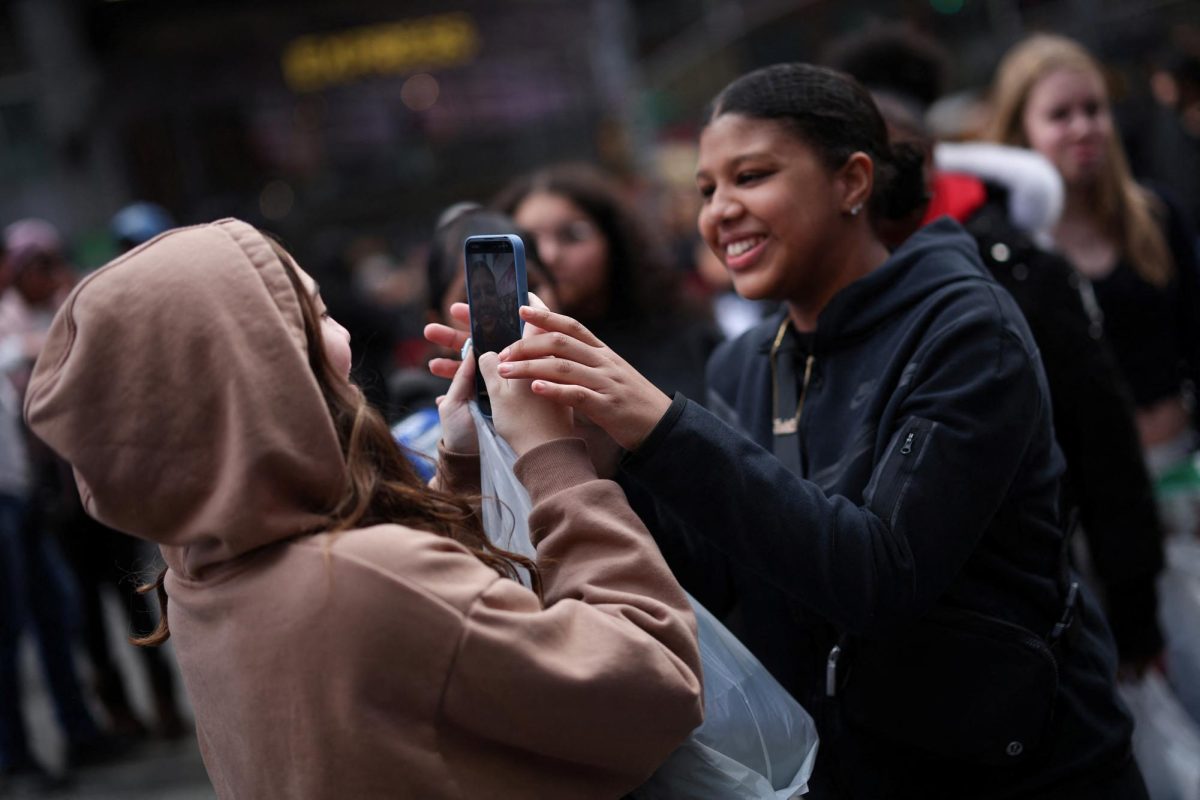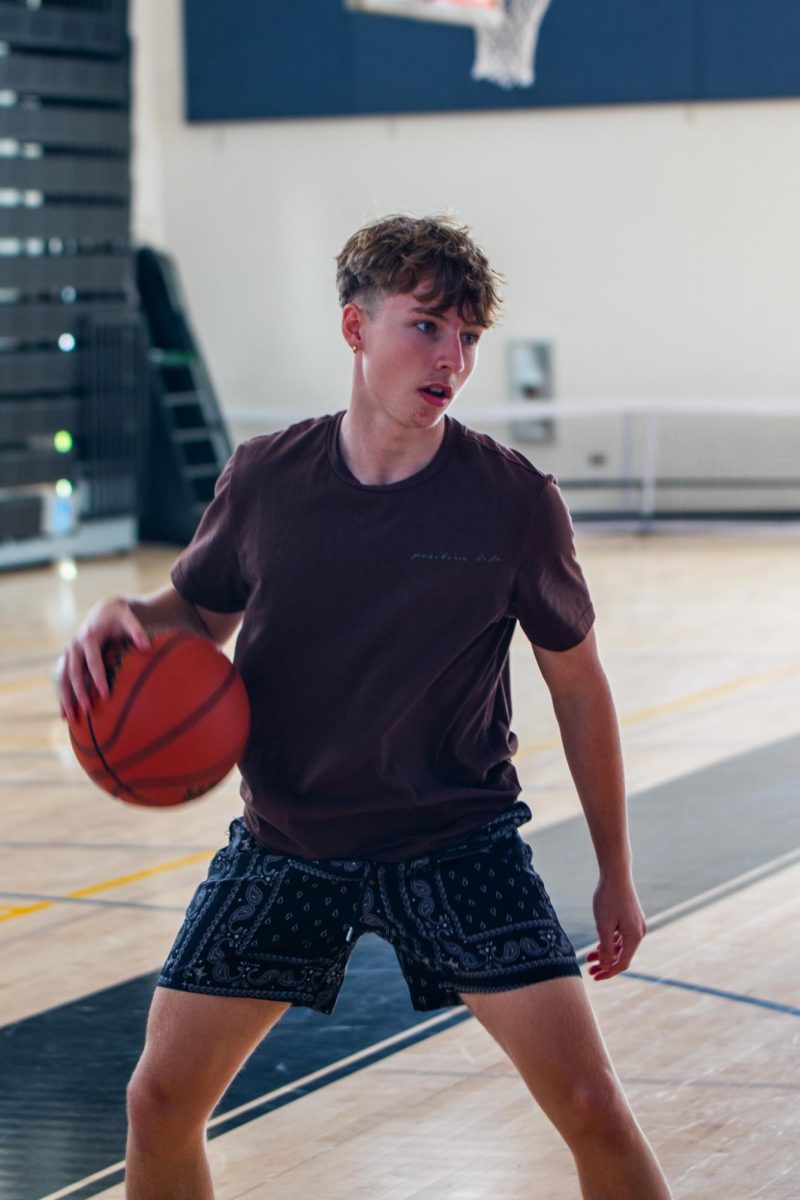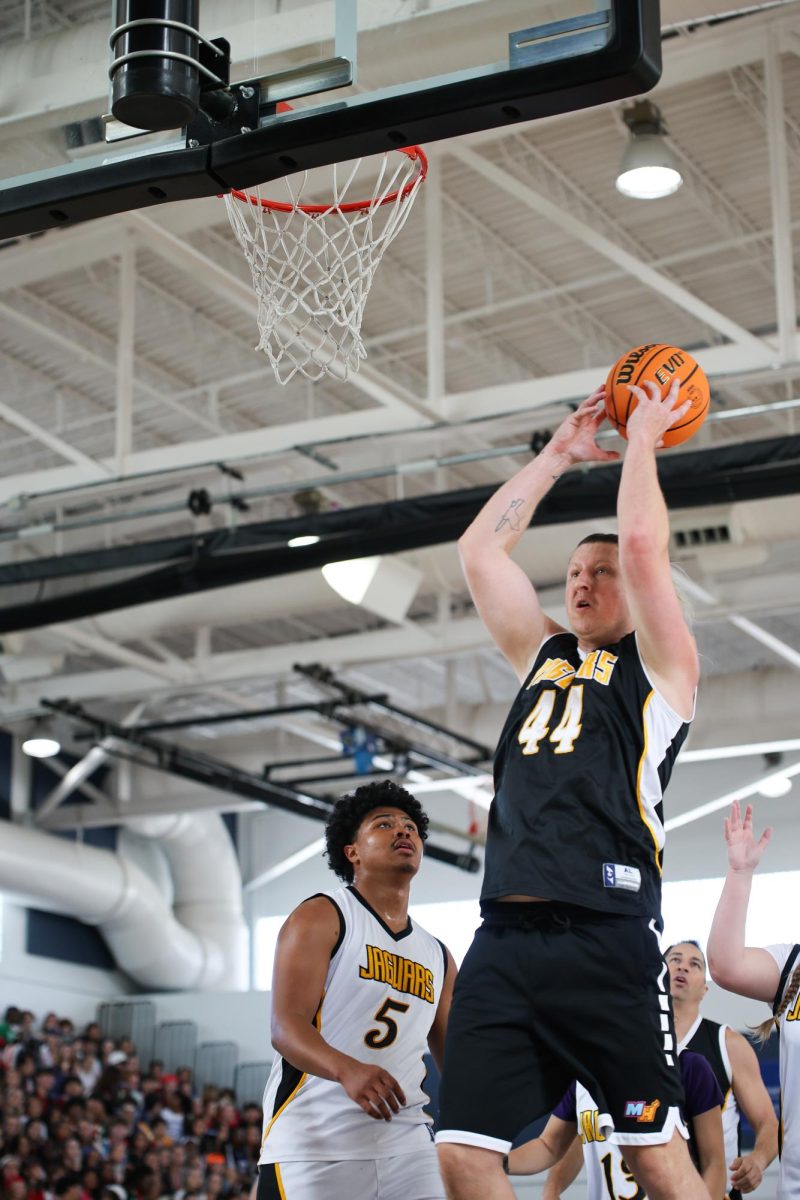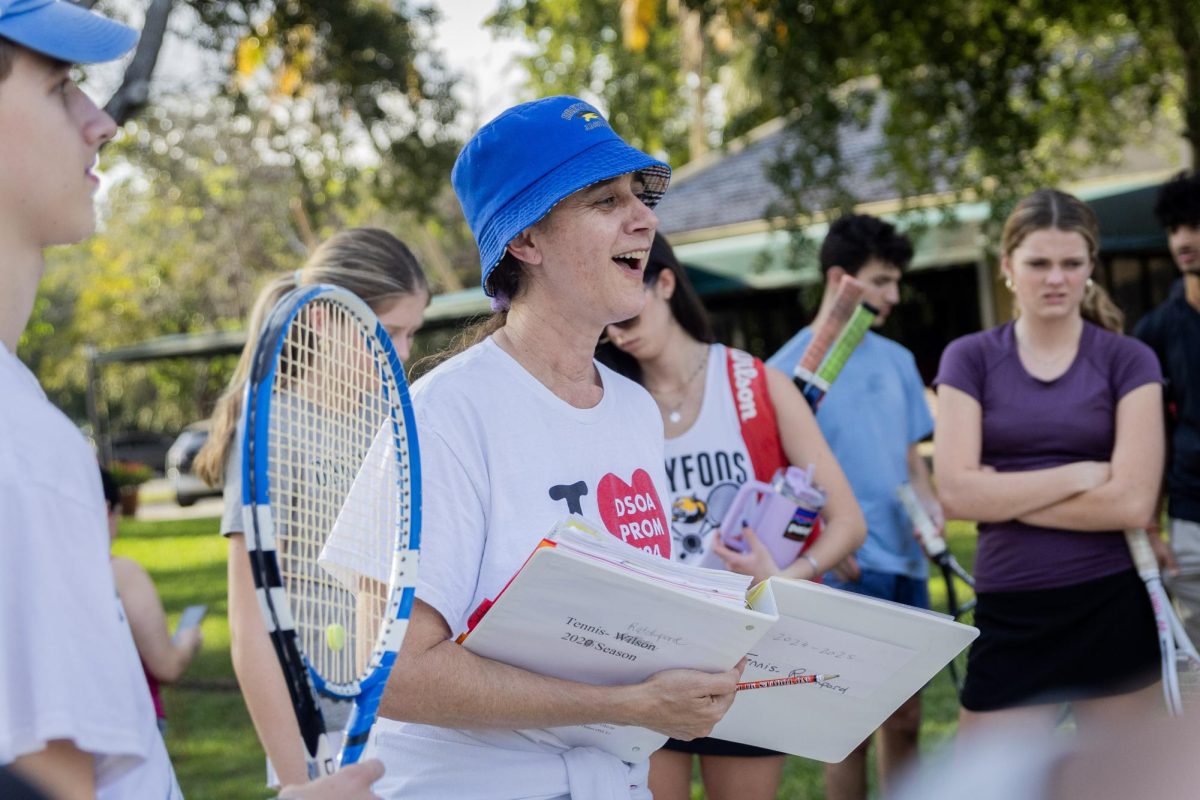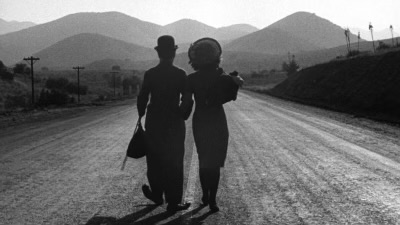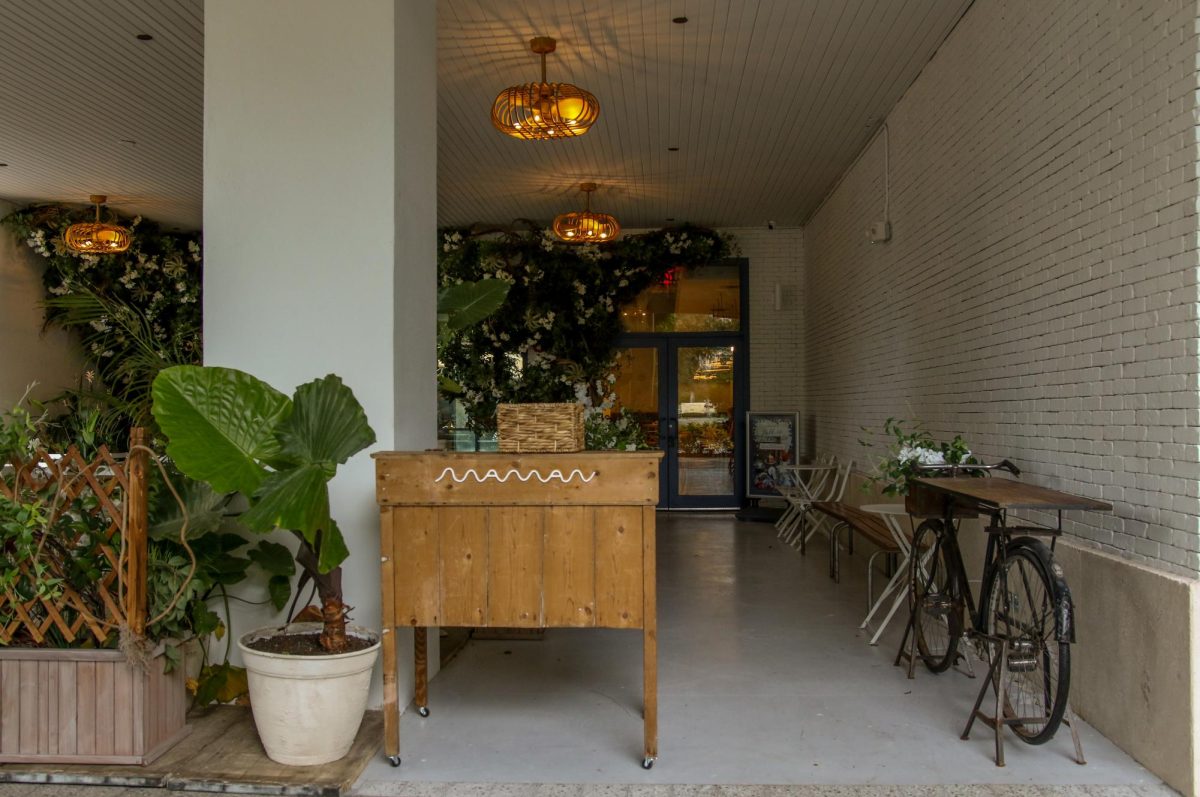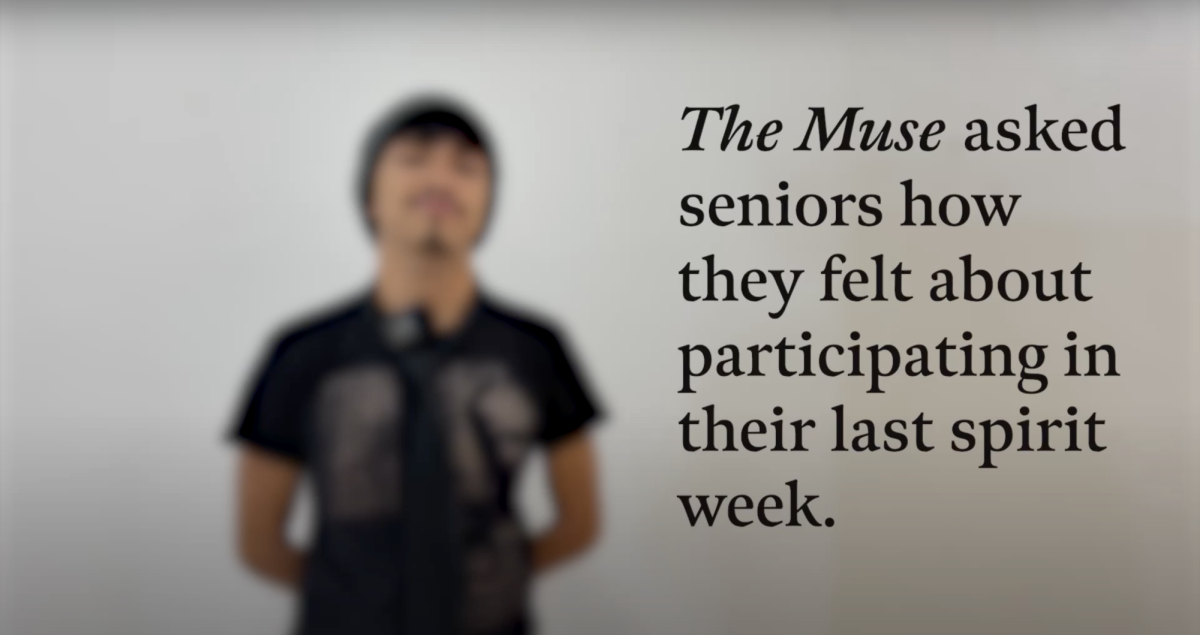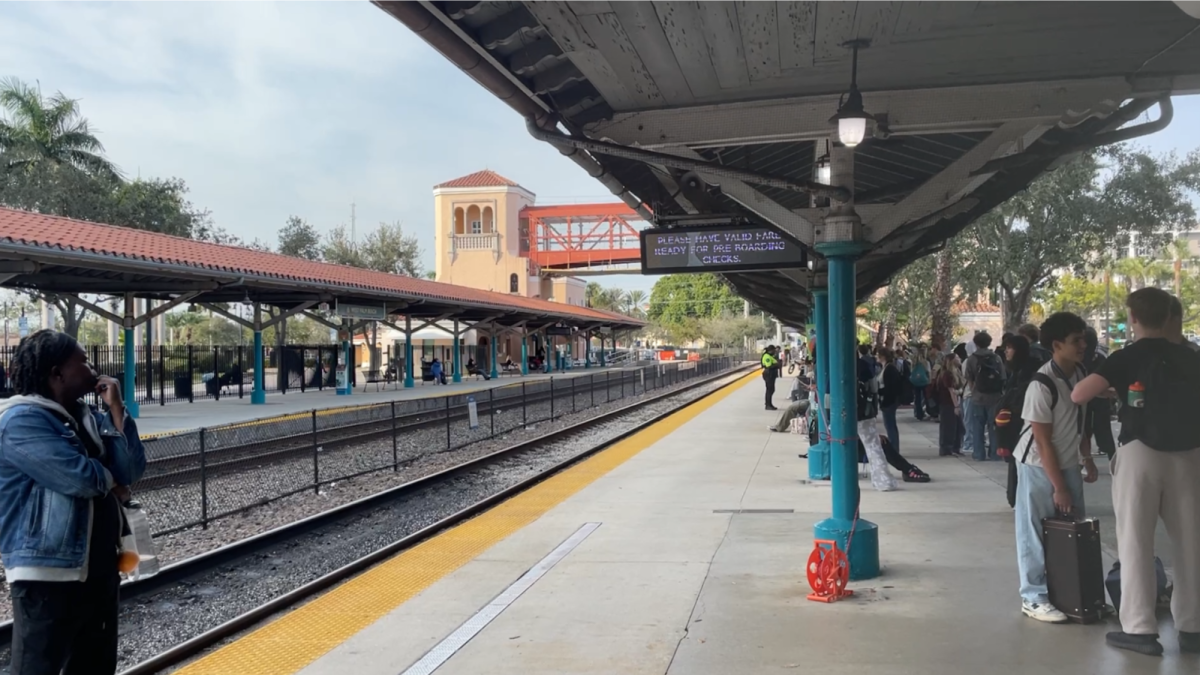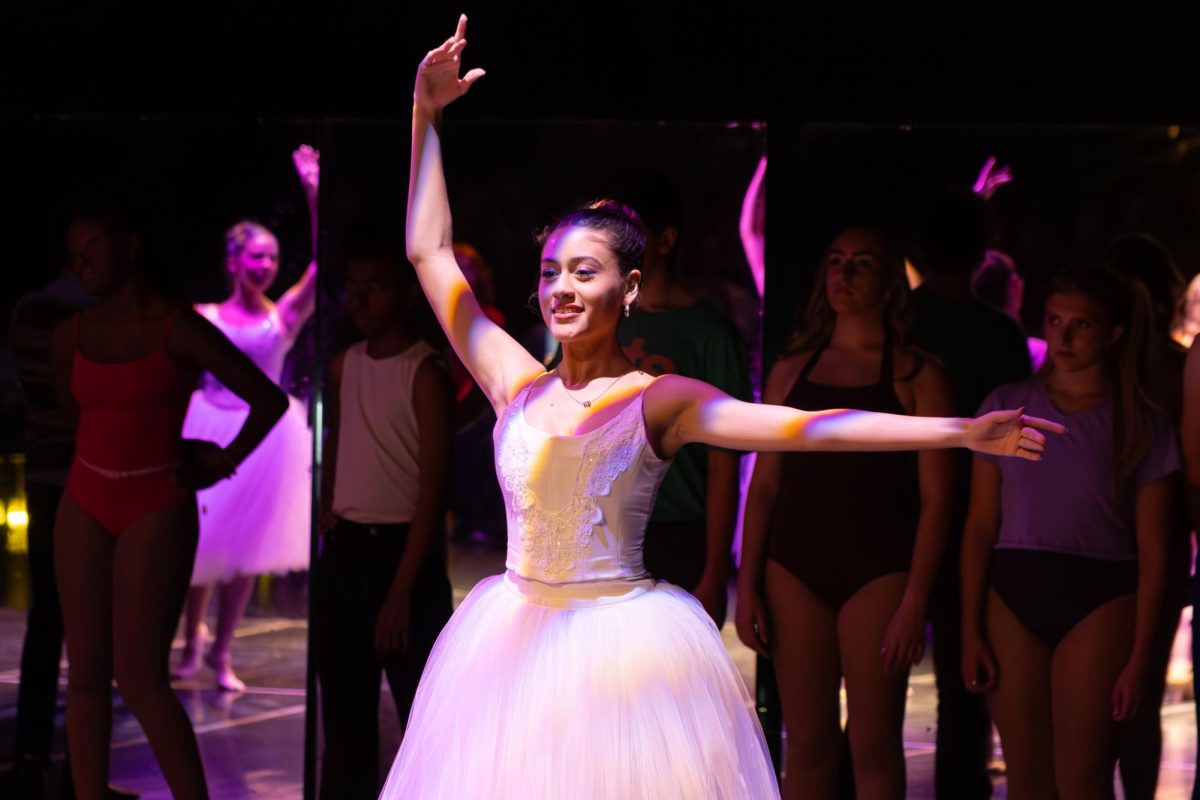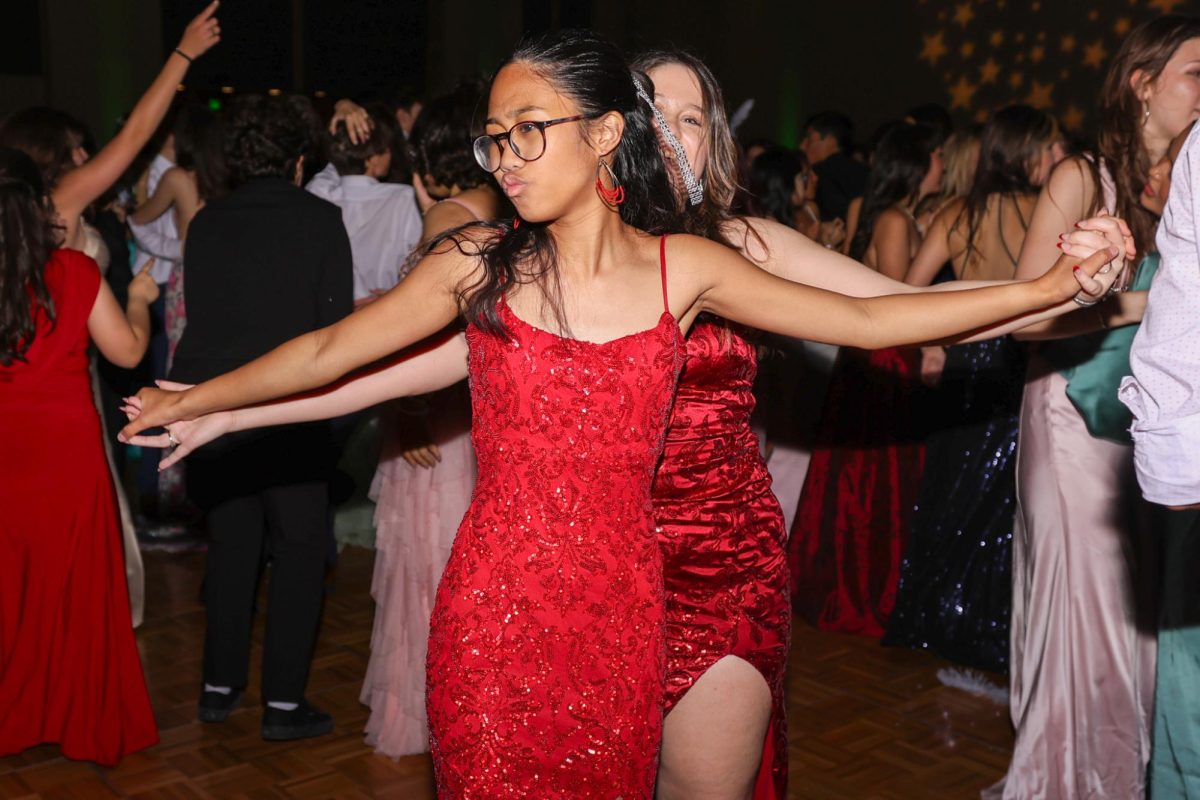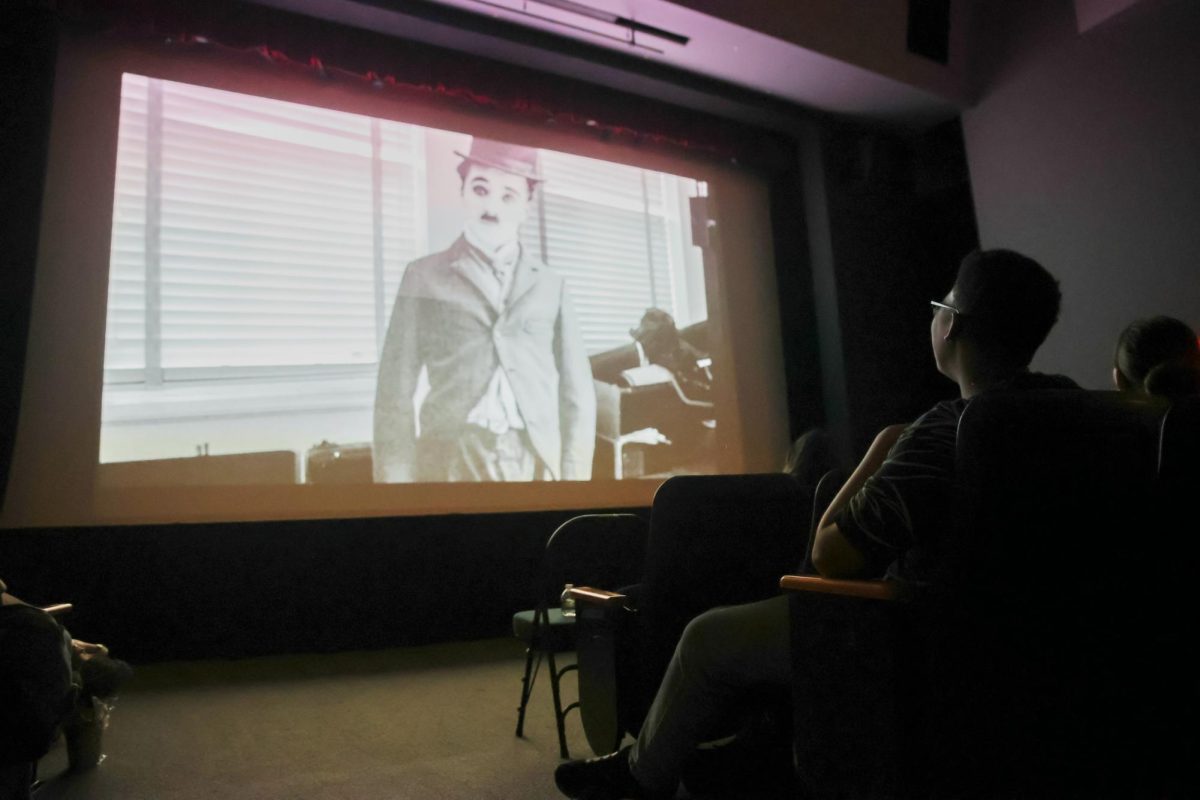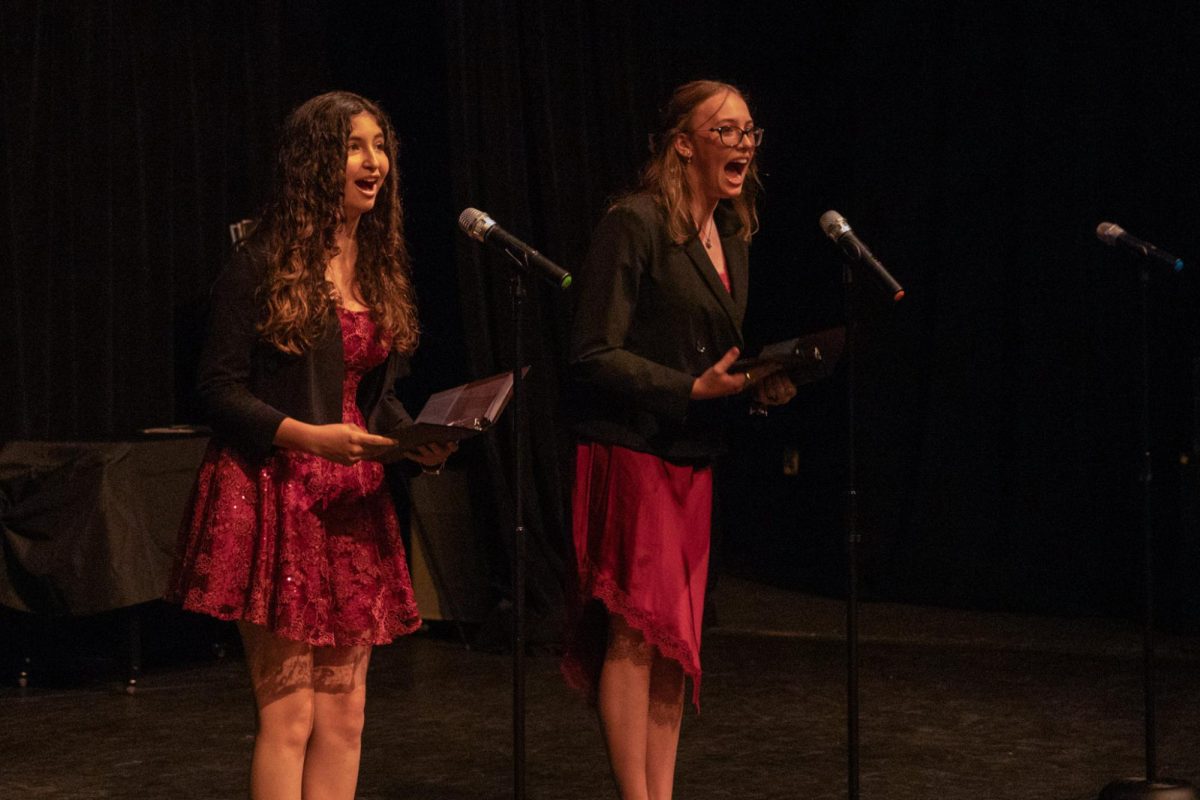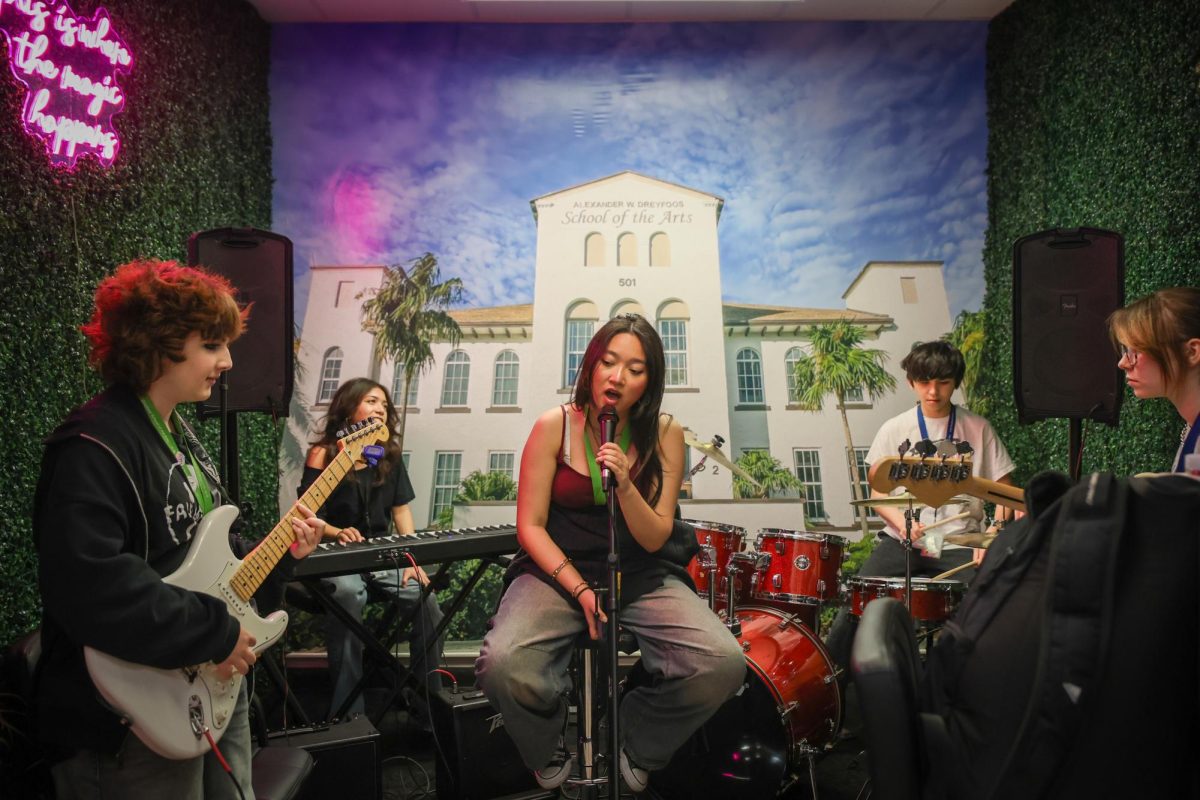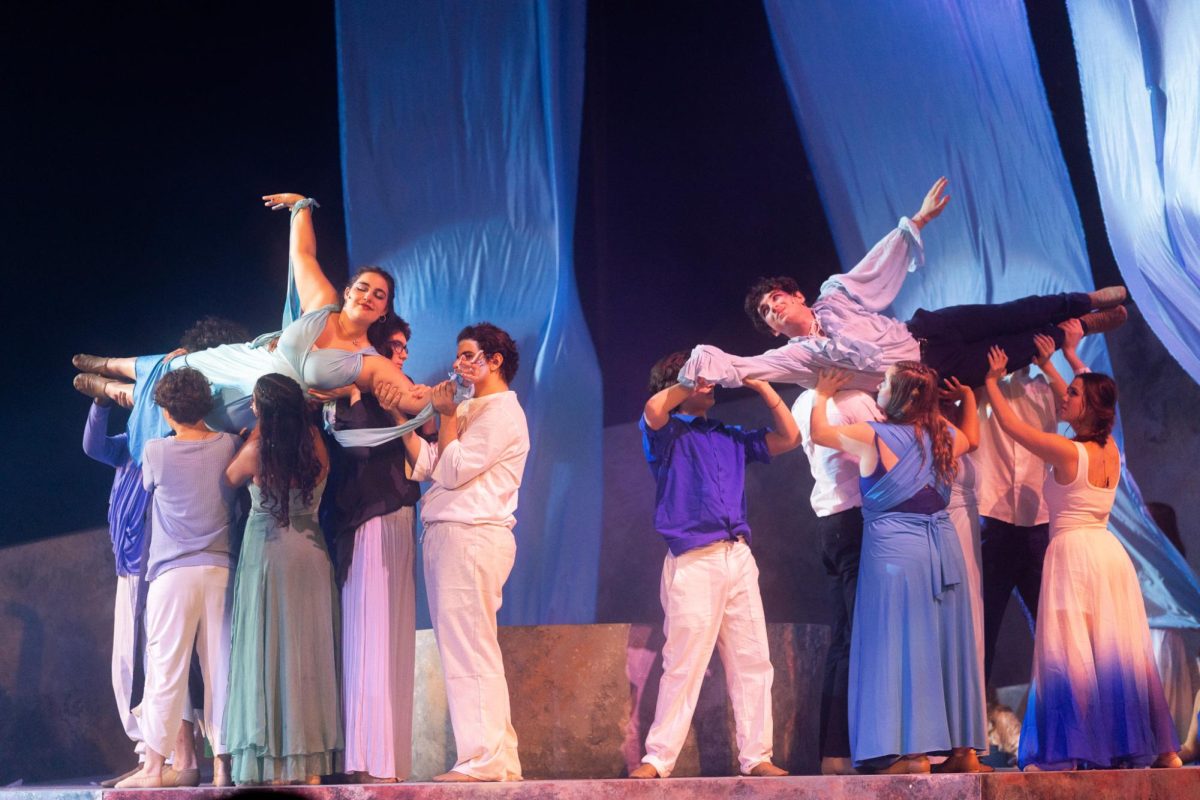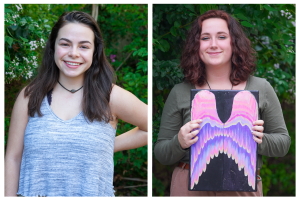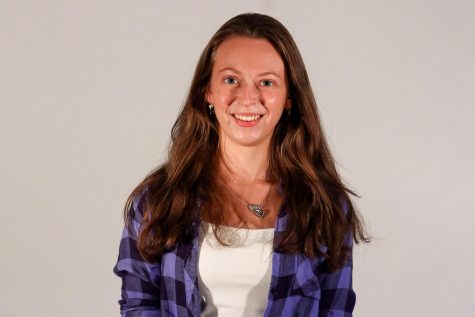January 28, 2020
Sitting on the floor with her legs spread out in front of her, visual junior Krista Brochu used a scalpel to shave away at the sides of a block of foam. She tightened the mask over her mouth and pulled her hair up into a bun before chiseling the foam into a pair of taut, outstretched arms. By the time she stepped back from her sculpture, her jeans and hands were dusted with white powder. Her finished masterpiece emerged: a wooden staircase, painted red, held up by faceless figures straining under the weight.
Brochu created “The Ascension of Oppression” while she was studying at The Oxbow School in Napa, California. Each year, a select group of visual juniors have the opportunity to spend a semester doing research and creating art pieces in the school’s program, one designed to challenge young artists. In addition to art classes, Oxbow students spend time camping and hiking outdoors, all while keeping up with the academic classes their peers are studying back home.
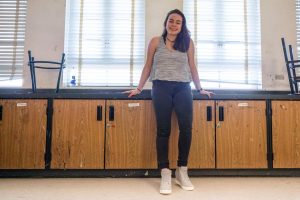
A typical day at The Oxbow School includes academic classes in the morning, art classes in the afternoon, and recreational time in the evenings to work on their projects. But in addition to the core curriculum, Brochu said that she learned how to think more critically about her ideas and develop them with the support of others.
“[Part of the challenge was] pushing myself out of my comfort zone. I was going to Oxbow for the arts, so I didn’t want to create the same art [at Oxbow] that I was creating here,” Brochu said. “I pushed myself to explore so much more, and I knew that if I experimented and it didn’t go well, then the experimentation [became] my art rather than the outcome.”
The Oxbow School is “tailored to student’s interests,” according to Holly McVeigh, Director of Admissions at The Oxbow School. It gives students the freedom to come up with and produce their own original pieces by using different mediums. This allows students to explore their creativity in ways that would be restricted in a typical classroom setting.
“You definitely have to [have] the right mindset. You have to be an independently driven student to go out and really experience what [the Oxbow program] wants you to experience,” visual dean Lacey Van Reeth said.
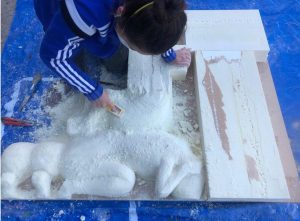
Brochu carves a block of foam while at The Oxbow School in Napa, California.
Located over 3,000 miles away from Dreyfoos, The Oxbow School also gives students the opportunity to step away from their normal lives. Ms. McVeigh emphasized how students take this opportunity to focus on their artwork without any distractions from their home lives.
“Generally, students come to Oxbow to experience an adventure away from home and to delve deeply into their academic and/or artistic interests,” Ms. McVeigh said. “It’s a place to step away from the typical pressures and expectations of home in order to figure out what is important to you and what you want to do with your life, moving forward.”
Ms. McVeigh explains that unlike other art schools, The Oxbow School teaches students to focus on the research aspect of the art-making process.
“The artwork that students do is actually very academic, and they are really delving into topics in-depth before making artwork about it,” Ms. McVeigh said. “Their artwork is well-informed, conceptual, and personal. […] The result [of this] is that students are a lot more engaged in their curriculum, and they get a broad sense of how all the subjects interact together.”
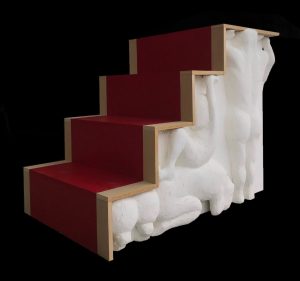
One of the art pieces that Brochu created while studying at The Oxbow School. The sides were made with wooden boards, and the human figures inside were sculpted from foam. Gesso and spackling paste was painted across the top.
However, there are some challenges that come with attending a program that lasts for an entire semester. Students are expected to keep up with their academics so that they do not fall behind once they come back to school in January. This can be challenging if students decide to take AP courses during their junior year.
“Students do have to be on top of things and understand that they [have to] go back into a system that is more structured and is more systematic,” Ms. Van Reeth said. “But, they oftentimes love the freedom that the Oxbow curriculum encourages—the free thinking, the out-of-the-box thinking.”
It is this freedom that Brochu says had a lasting impact on her, even after she returned to Dreyfoos. She explains that it taught her to reevaluate the work she did as an artist and gave her a fresh perspective on the art she strives to create.
“I think a lot more. I question more, and I think more beyond what I was given. I feel so much more connected to myself, to the ground I’m walking on, to the space around me—but also to how I think,” Brochu said. “I feel like my thought processing is so much more developed than it would have been had I not gone to Oxbow.”

